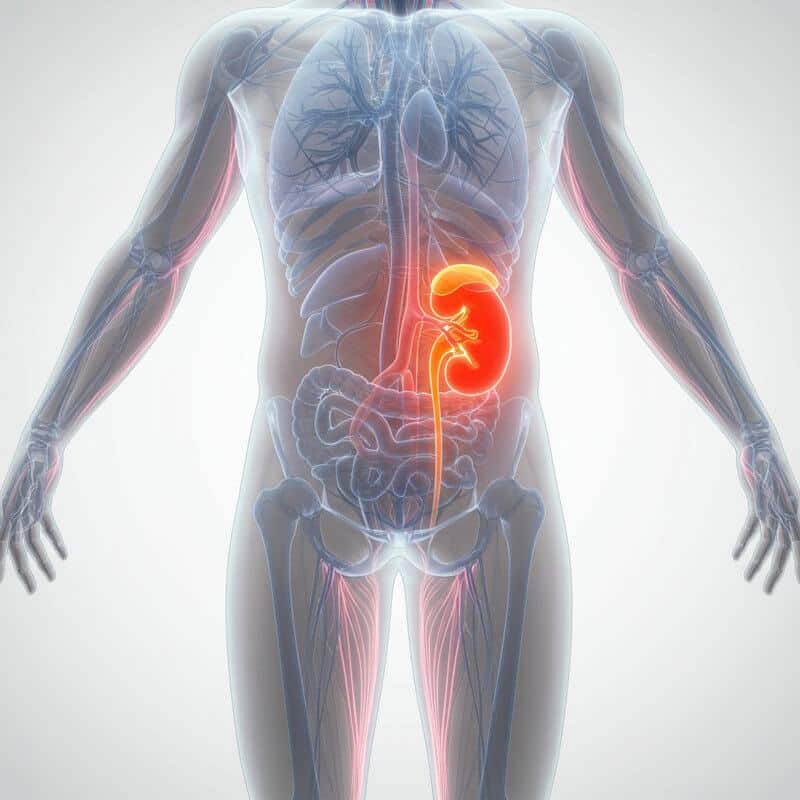Foods That Act Like Poison for Diabetics (But Seem Healthy)
Diabetes affects over 537 million adults worldwide, and this number is steadily rising. The pancreas plays a crucial role in regulating blood sugar levels by producing insulin, yet for those with diabetes, this process is impaired, leading to dangerous fluctuations. While making dietary choices, many people are misled by foods marketed as “healthy,” which can actually sabotage blood sugar control. Identifying these deceptively unhealthy options is a critical challenge for diabetics and care providers alike, as controlling diet remains one of the most effective ways to manage the disease.
1. Whole Wheat Bread
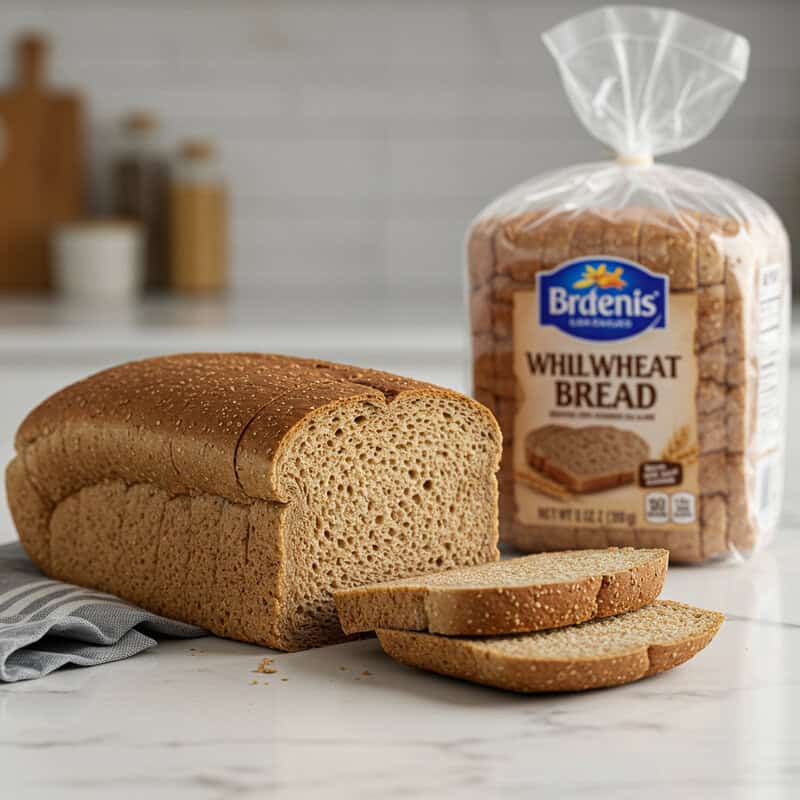
Many people assume that whole wheat bread is a healthy choice, especially when compared to white bread. However, whole wheat bread can still have a high glycemic load, causing rapid spikes in blood sugar. Despite its fiber content, the grains are often ground very finely, allowing glucose to be absorbed quickly by the body. According to Harvard Health, some whole wheat breads have nearly the same glycemic index as white bread.
Food packaging can be misleading, with labels like “100% whole grain” or “multigrain” suggesting a healthier product. In reality, many store-bought whole wheat breads contain added sugars or refined flour, further increasing their impact on blood sugar. For example, a typical slice of commercial whole wheat bread may contain ingredients such as honey, molasses, or high fructose corn syrup, all of which can raise glucose levels.
To make better choices, diabetics should look for breads that are specifically labeled as low-glycemic, sprouted grain, or made from whole, unprocessed grains. Reading the ingredient list and nutritional information carefully is essential. For more detailed guidance, visit American Diabetes Association: Bread.
2. Granola Bars
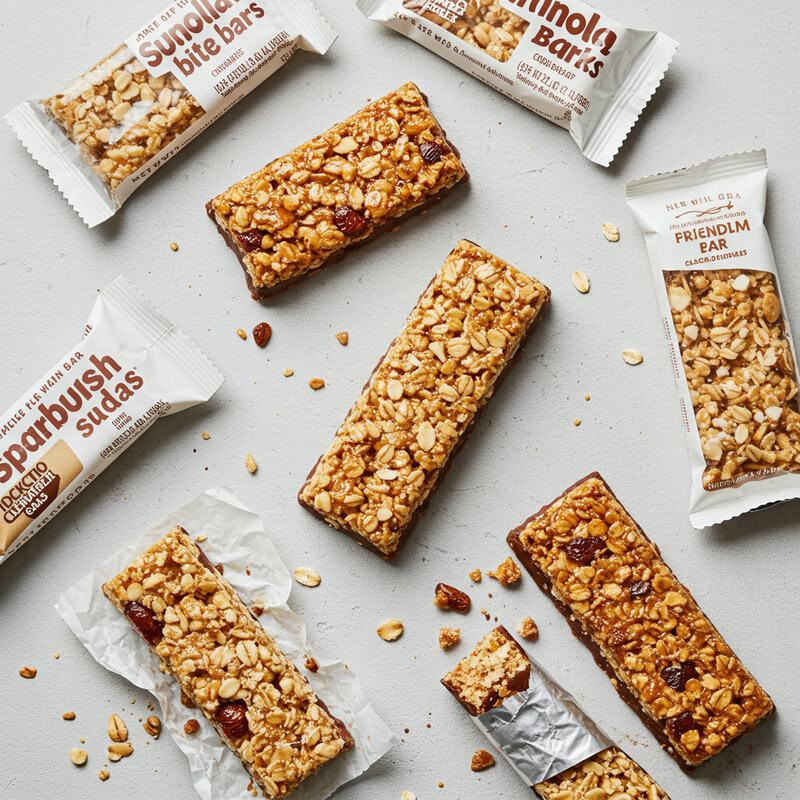
Granola bars are often marketed as a nutritious snack option, but most commercial varieties are loaded with added sugars and processed ingredients. Despite their reputation as a health food, many granola bars contain high levels of sweeteners like honey, brown rice syrup, or cane sugar, which are rapidly absorbed and can cause significant spikes in blood glucose. In fact, some popular granola bars have sugar content comparable to that of candy bars, making them far from ideal for those managing diabetes. A review by Consumer Reports highlights how some bars contain up to 15 grams of sugar per serving.
Not only do these sugars impact blood sugar quickly, but ingredients such as dried fruit and chocolate chips can further increase the carbohydrate load. Even bars claiming to be “natural” or “organic” often hide sugars under names like “evaporated cane juice” or “agave nectar.” It is crucial for diabetics to scrutinize ingredient labels, paying close attention to both the total and added sugar content. For tips on decoding labels and making safer choices, visit the American Diabetes Association: Reading Food Labels.
3. Flavored Yogurt
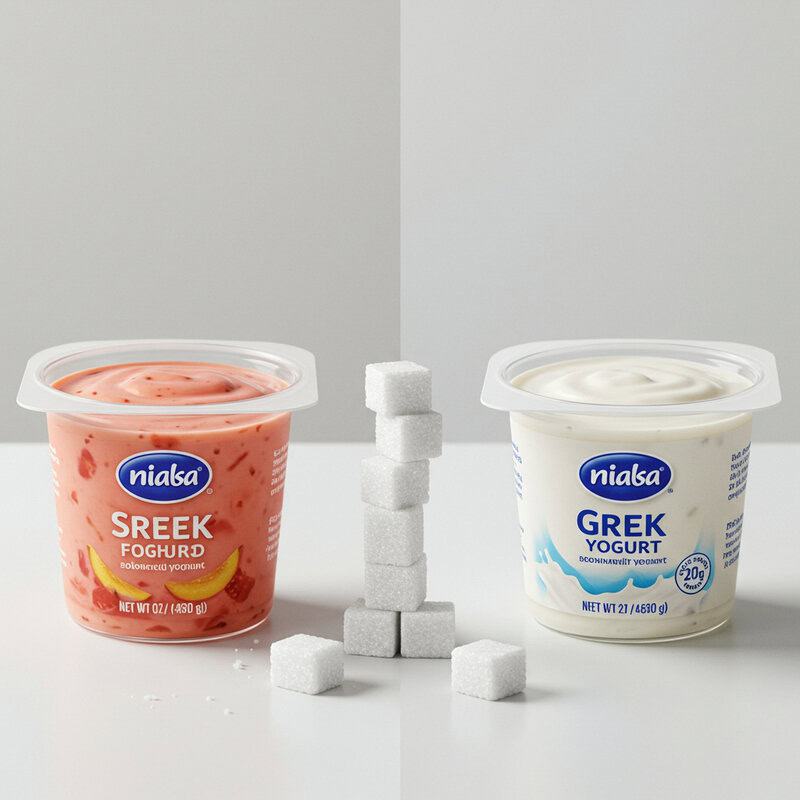
While yogurt is often promoted as a healthy snack due to its probiotics and protein, flavored varieties can be problematic for diabetics. Most flavored yogurts contain substantial amounts of added sugars, which can quickly elevate blood glucose levels and negate the potential health benefits. According to Healthline, a single serving of flavored yogurt can contain up to 20 grams of sugar, rivaling the sugar content in some desserts.
In contrast, plain yogurt—especially Greek yogurt—contains minimal natural sugar (lactose) and no added sweeteners. This makes it a much better option for blood sugar management. The high protein content in plain yogurt can also help slow the absorption of carbohydrates, reducing the risk of sharp blood sugar spikes. Many people are surprised to learn how much sugar is hidden in fruit-flavored or dessert-inspired yogurts, often masked by terms like “fruit on the bottom” or “blended.”
For those with diabetes, it is advisable to choose unsweetened, plain yogurt and add fresh berries or a sprinkle of cinnamon for flavor. For more on making healthy dairy choices, visit the American Diabetes Association: Diabetes Superstar Foods.
4. Fruit Juices
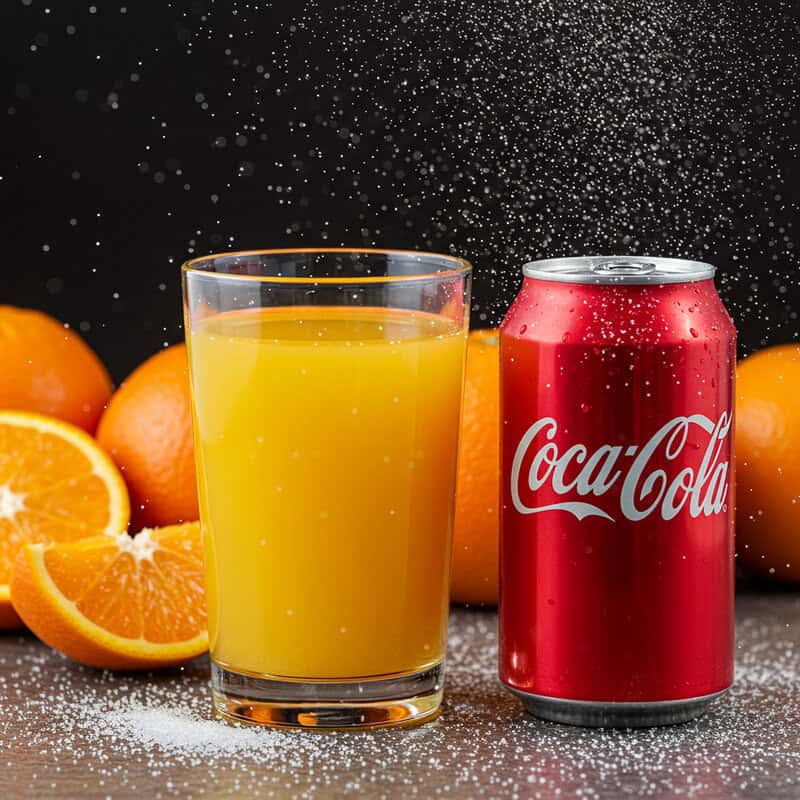
Fruit juices—even those labeled as “100% juice”—can be deceptively unhealthy for diabetics. Although fruit juice contains vitamins and minerals, it also delivers a concentrated dose of natural sugars without the beneficial fiber found in whole fruit. This lack of fiber means that the sugars in juice are absorbed very quickly, often resulting in rapid blood sugar spikes. According to CDC, a single cup of orange juice can contain as much sugar as a can of soda.
In contrast, eating whole fruit provides fiber that slows down digestion and the release of sugars into the bloodstream, which helps prevent sudden glucose spikes. For example, an apple eaten whole has a much lower impact on blood sugar compared to drinking apple juice. Many people mistakenly assume that “natural” juice is always a healthy choice, but for those managing diabetes, this can lead to unexpected complications.
Diabetics are advised to monitor portion sizes carefully or avoid fruit juices altogether. Instead, consider infusing water with slices of citrus or berries for flavor without the sugar rush. For more guidance on healthy beverage choices, visit the American Diabetes Association: Healthy Beverages.
5. Brown Rice
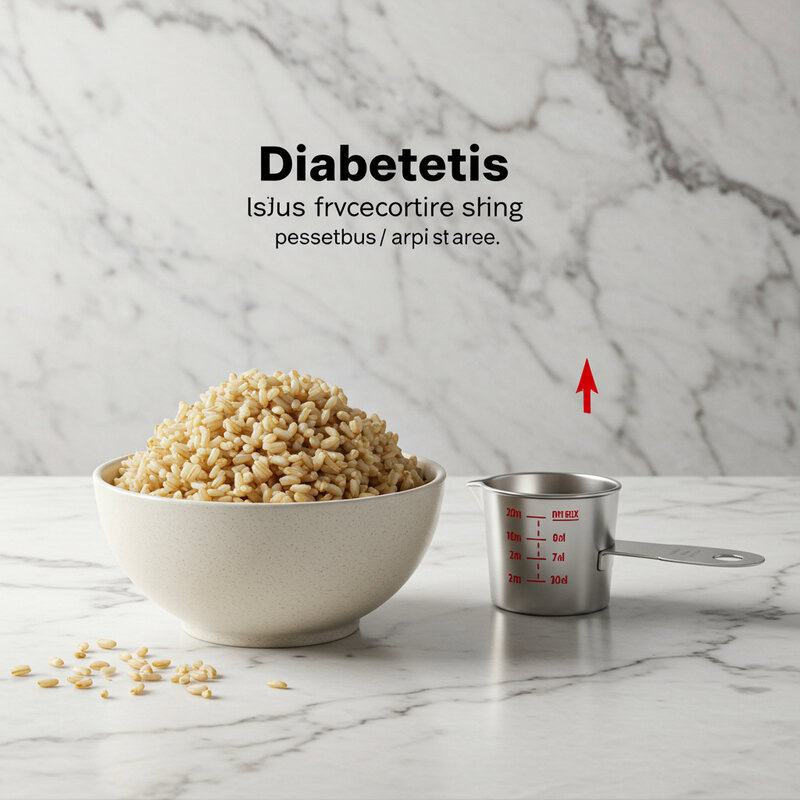
Brown rice is often considered a healthier alternative to white rice due to its higher fiber and nutrient content. However, the idea that brown rice is always low-glycemic is a common misconception. While it is less processed and has more fiber than white rice, brown rice still has a moderate glycemic index, meaning it can raise blood sugar levels significantly—especially when consumed in large portions. According to The Glycemic Index Foundation, brown rice has a glycemic index of around 68, only slightly lower than white rice.
When compared to other whole grains such as quinoa, barley, or bulgur, brown rice typically causes a more pronounced increase in blood glucose. These alternative grains often have lower glycemic indices and higher levels of fiber and protein, making them better choices for those aiming to manage diabetes effectively. Many people are surprised to learn that a large serving of brown rice can impact blood sugar almost as much as its white counterpart.
To help reduce the glycemic impact, diabetics should consider pairing brown rice with fiber-rich foods such as leafy greens, beans, or non-starchy vegetables. For additional tips on choosing diabetes-friendly grains, visit the American Diabetes Association: Whole Grains & Diabetes.
6. Gluten-Free Packaged Foods

Gluten-free packaged foods are often perceived as healthier options, but for diabetics, they can be particularly misleading. Many gluten-free products, such as breads, crackers, and cookies, rely on refined starches like rice flour, potato starch, and tapioca starch to mimic the texture of wheat-based goods. These refined ingredients have a high glycemic index, causing rapid spikes in blood sugar levels. According to Harvard Health, gluten-free baked goods can sometimes have an even greater glycemic impact than their conventional counterparts.
For example, a gluten-free muffin may contain more rapidly absorbed carbohydrates than a regular wheat-based muffin due to the use of processed flours and added sugars. Many people who are not sensitive to gluten are surprised to find that gluten-free does not equate to “low-carb” or “healthy.” These foods can easily undermine blood sugar management if consumed without caution.
Diabetics should be wary of gluten-free labels and always check ingredient lists and nutrition panels for hidden sugars, starches, and high carbohydrate content. For more information about making informed choices, visit the Celiac Disease Foundation: Gluten-Free Label Reading.
7. Dried Fruit
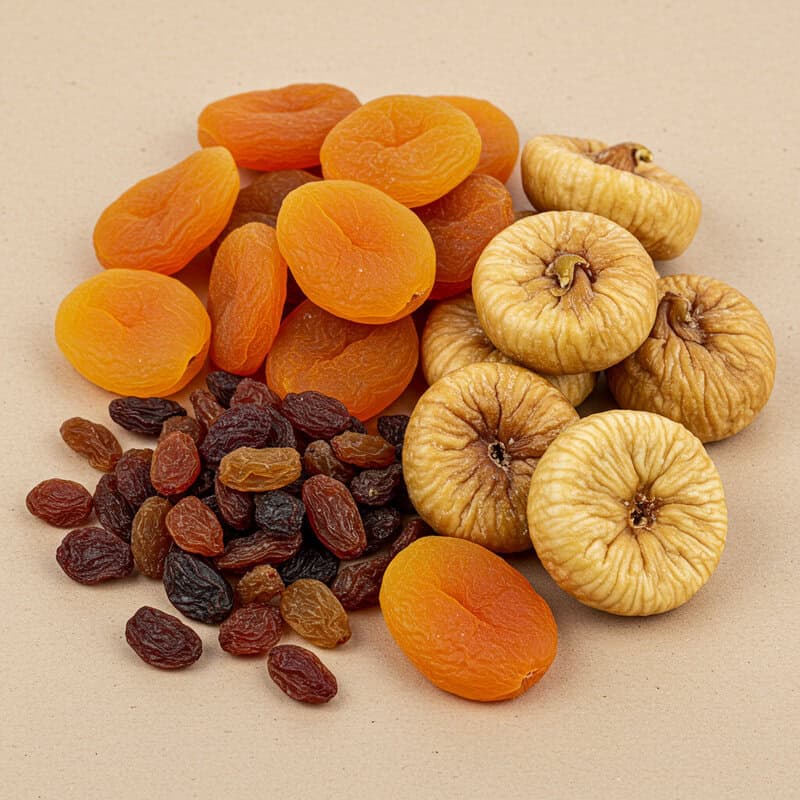
Dried fruit is often seen as a convenient and nutritious snack, but for diabetics, it can pose significant risks due to its concentrated sugar content. During the drying process, water is removed, which drastically reduces the volume while leaving all the natural sugars intact. As a result, a small handful of dried fruit can contain the same amount of sugar as a much larger serving of fresh fruit. For example, a quarter-cup of raisins contains about 24 grams of sugar, while a whole cup of grapes—its fresh equivalent—contains less than half that amount, according to Harvard T.H. Chan School of Public Health.
Additionally, many commercially packaged dried fruits have added sugars or syrups to enhance sweetness and texture, further increasing their glycemic impact. These factors make it easy to overconsume dried fruit and unintentionally spike blood glucose levels. The small portion size required for moderation can be misleading, as it’s easy to eat several servings in one sitting.
Diabetics should consume dried fruit sparingly, opt for unsweetened varieties, and always be mindful of portion sizes. For more on managing fruit intake with diabetes, visit the American Diabetes Association: Fruit and Diabetes.
8. Low-Fat Salad Dressings
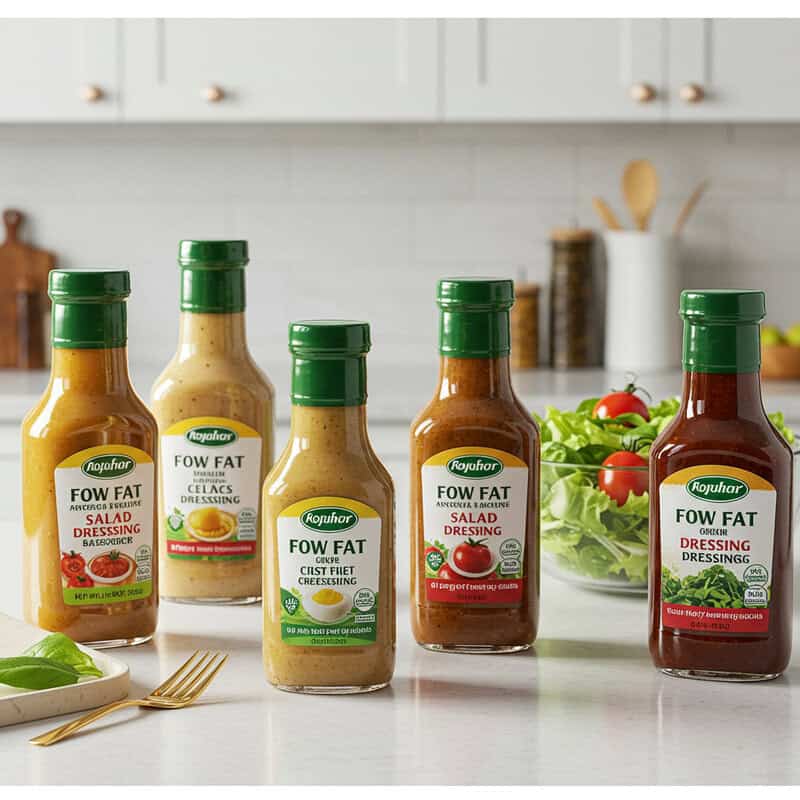
Low-fat salad dressings are frequently marketed as a healthier alternative to their full-fat counterparts, but they can be problematic for diabetics. When manufacturers remove fat from dressings, they often compensate for the loss of flavor and texture by adding sugars, corn syrup, or other high-glycemic sweeteners. These added sugars can quickly raise blood glucose levels, making seemingly “light” dressings a hidden danger for blood sugar control. According to CDC, many low-fat dressings contain more sugar than regular versions.
In contrast, homemade dressings using simple ingredients like olive oil, vinegar, mustard, and fresh herbs provide flavor without unnecessary sugars or preservatives. These options also offer healthy fats, which can help slow the absorption of carbohydrates from the rest of the meal. Many store-bought dressings, even those labeled “low-calorie” or “heart-healthy,” may contain unexpected sweeteners such as high-fructose corn syrup or honey.
Diabetics are encouraged to read labels carefully, looking for added sugars or unfamiliar sweeteners in ingredient lists. For more guidance on healthy salad dressing choices and recipes, visit the Diabetes Food Hub: Salad Dressings.
9. Flavored Oatmeal Packets
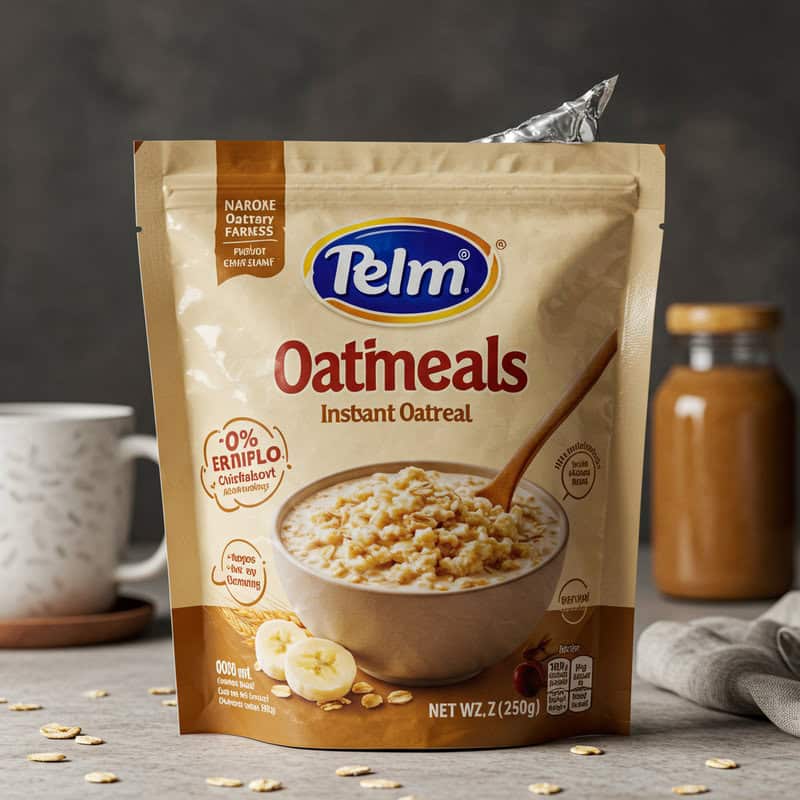
Flavored instant oatmeal packets are a popular breakfast choice, often perceived as healthy due to their whole grain base. However, these convenient packets frequently contain significant amounts of added sugars and artificial flavorings. According to Healthline, some flavored oatmeal packets have as much as 12 grams of sugar per serving, which can cause a rapid rise in blood glucose levels. The quick-cooking nature of instant oats also means they are digested and absorbed faster, further contributing to blood sugar spikes.
By contrast, plain rolled oats or steel-cut oats contain no added sugars and have a lower glycemic impact. These less-processed oats release glucose more slowly, making them a better choice for sustained energy and blood sugar management. Many people are surprised to learn that the “healthy” instant version can be as problematic as sugary breakfast cereals when it comes to diabetes control.
To enjoy oatmeal without the sugar spike, diabetics should prepare plain oats at home and add flavor with fresh fruit, nuts, cinnamon, or a dash of vanilla extract. For more tips on making diabetes-friendly oatmeal, visit the Diabetes Food Hub: Oatmeal Tips.
10. Sports Drinks
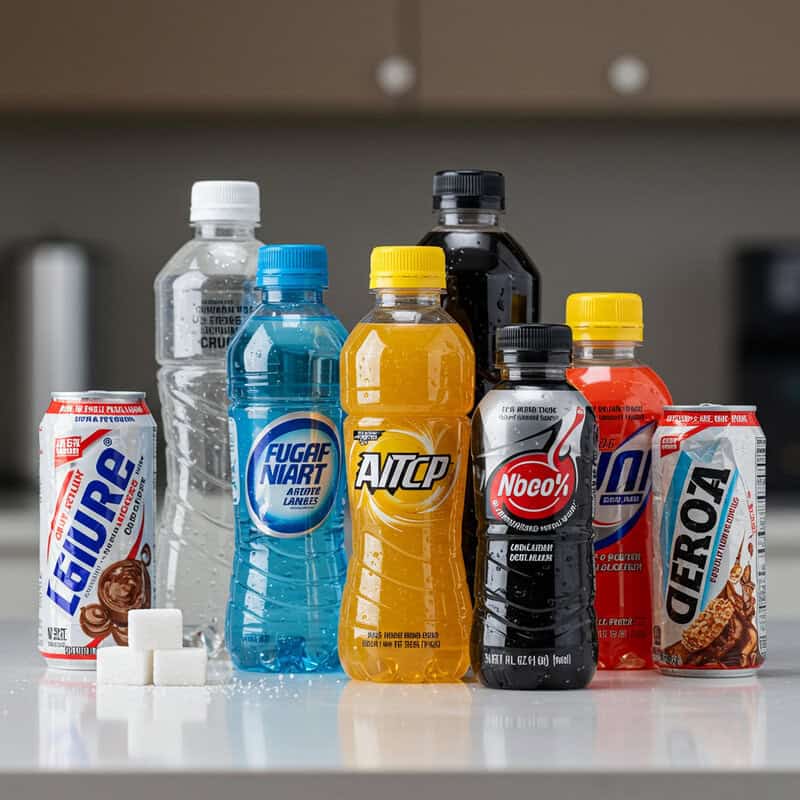
Sports drinks are often marketed as essential for hydration and replenishing electrolytes, but for diabetics, they can be a hidden source of rapidly absorbed sugars. A typical sports drink contains between 20 and 34 grams of sugar per bottle, which can cause a swift and significant elevation in blood glucose levels. According to the CDC, consuming beverages high in added sugars is linked to poor blood sugar control and an increased risk of complications for people with diabetes.
In many cases, water or low-calorie electrolyte tablets are far superior options for staying hydrated and maintaining electrolyte balance during exercise. Unlike sports drinks, these alternatives provide necessary hydration without the blood sugar spike. Many people believe that sports drinks are only slightly different from water, yet their sugar content rivals that of sodas and fruit juices.
For diabetics, the best choices for hydration include plain water, sparkling water, or electrolyte solutions that are free from added sugars. Reading labels is essential, as even some “reduced sugar” sports drinks can still pose risks. For more advice on healthy hydration, visit the American Diabetes Association: Healthy Beverages.
11. Veggie Chips
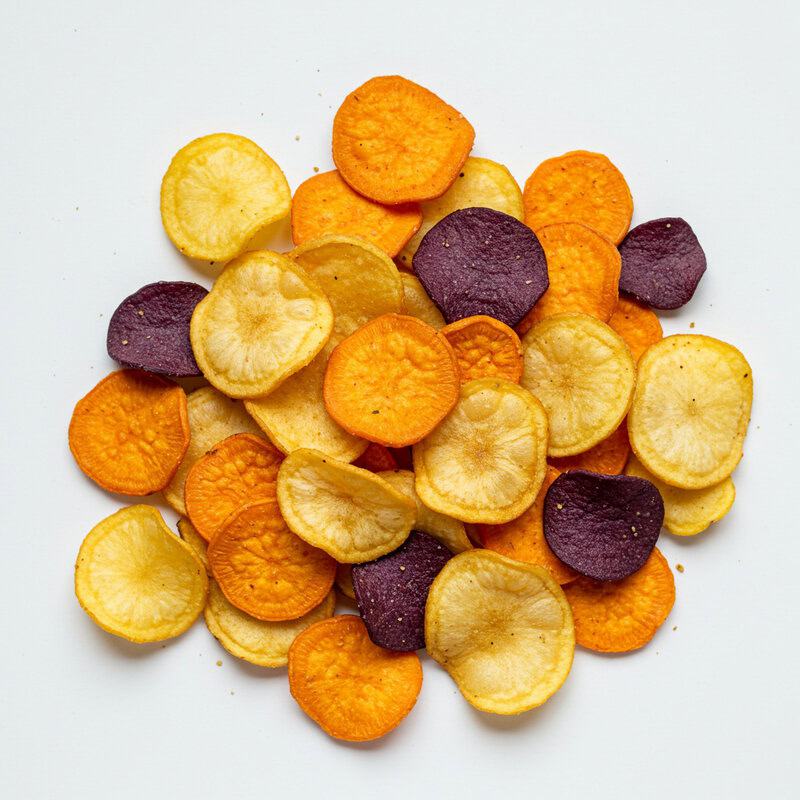
Veggie chips are frequently marketed as a healthier alternative to traditional potato chips, but the reality is often less impressive, especially for diabetics. Many commercial veggie chips are made primarily from starchy vegetables like potatoes, sweet potatoes, or processed vegetable powders, combined with refined starches and oils. As a result, their fiber content is typically low, and their glycemic impact can be just as high—or even higher—than regular potato chips. A report from Consumer Reports points out that many veggie chips offer little nutritional advantage over standard chips.
Some brands may use vegetables such as carrots, beets, or spinach, but these are often present in small amounts and do not significantly increase fiber or nutrient levels. The starches and oils used in processing can cause rapid rises in blood glucose, undermining efforts to maintain stable blood sugar. Many consumers assume veggie chips are “better for you,” but the difference is often minimal when compared to traditional potato chips.
For a truly healthy alternative, diabetics should look for snacks made from whole, sliced, and baked vegetables without added starches or sugars. For more snack ideas and guidance, see the Diabetes Food Hub: Snack Ideas.
12. Smoothie Bowls
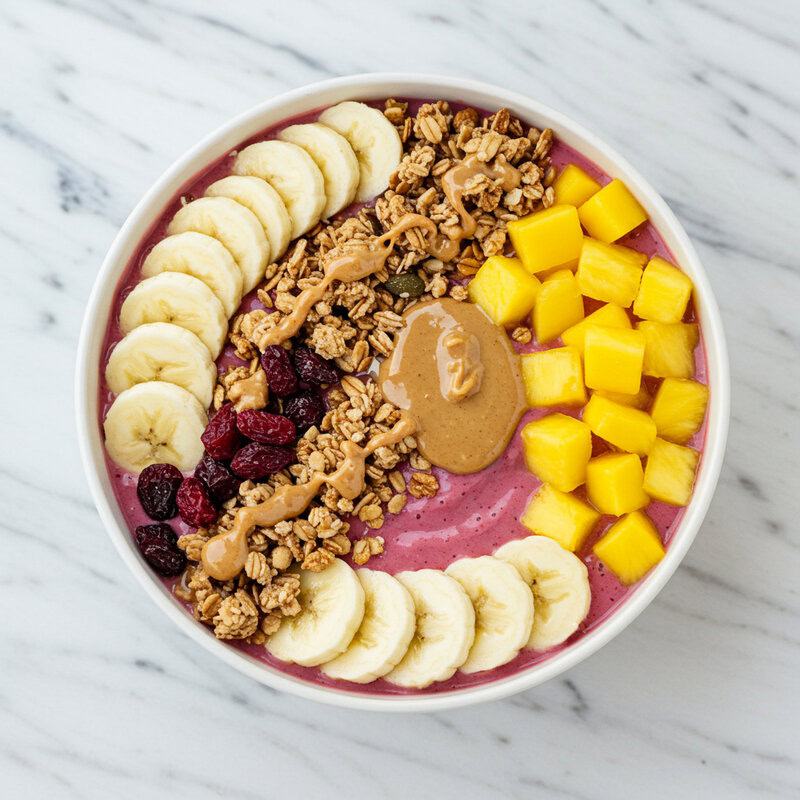
Smoothie bowls have surged in popularity, often touted as a vibrant and nutritious breakfast or snack option. However, they can easily turn into sugar bombs, even when made with seemingly healthy fruits and toppings. The base of a smoothie bowl frequently contains blended bananas, mangoes, or pineapple—fruits naturally high in sugar. When topped with granola, honey, dried fruit, and nut butters, the total sugar and carbohydrate content can rival that of a dessert. For example, a popular acai bowl from a national chain can contain over 65 grams of sugar per serving, according to Eat This, Not That!.
These high sugar levels can cause significant blood glucose spikes for diabetics, undermining the health halo often associated with smoothie bowls. Even homemade versions can quickly become problematic if portion sizes and ingredients are not carefully selected. Many people do not realize that the natural sugars in fruit add up rapidly, especially when concentrated in blended form.
To make a lower-sugar smoothie bowl, use unsweetened Greek yogurt or non-dairy alternatives as a base, incorporate mostly berries, and limit added sweeteners and high-carb toppings. For more tips, visit American Diabetes Association: Fruit.
13. Agave Syrup
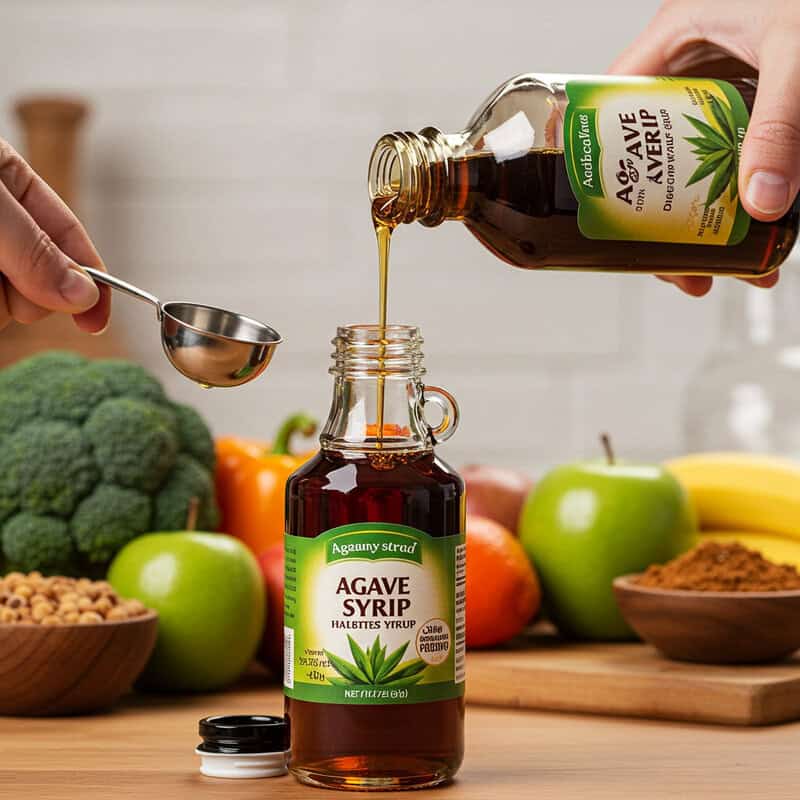
Agave syrup is frequently marketed as a “natural” and diabetic-friendly sweetener due to its low glycemic index, but this reputation is misleading. Agave syrup is extremely high in fructose—much higher than regular table sugar. While fructose does not cause immediate spikes in blood glucose, excessive consumption can worsen insulin resistance, increase liver fat, and ultimately contribute to metabolic problems. According to Harvard Health, agave syrup contains up to 90% fructose, compared to about 50% in table sugar (sucrose).
Although agave’s lower glycemic index may seem beneficial, its high fructose content can be even more harmful in the long run, particularly for those with or at risk of diabetes. Consuming high amounts of fructose is linked to increased insulin resistance and higher risk of fatty liver disease. Many people are drawn to agave syrup as a healthier substitute for honey or sugar, not realizing that it may be just as problematic—or worse—for blood sugar management and overall metabolic health.
Experts recommend minimizing the use of all added sweeteners, including agave. For more on sweetener choices and their effects, visit the American Diabetes Association: Sugar and Desserts.
14. Rice Cakes
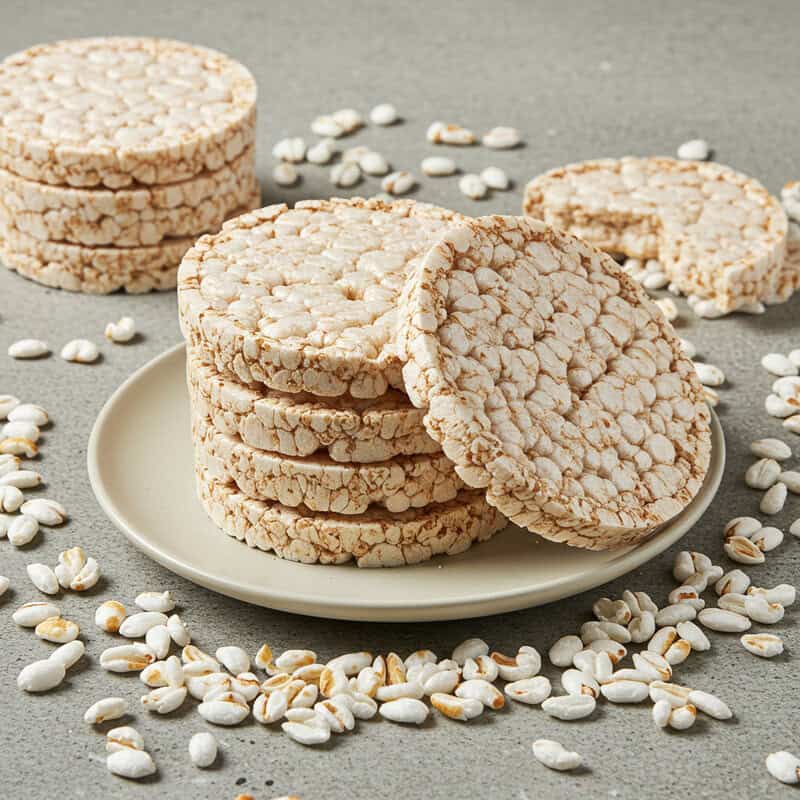
Rice cakes are often promoted as a light, low-calorie snack, but their high glycemic index makes them a poor choice for diabetics. Because rice cakes are made from puffed white rice, they are quickly digested and absorbed, causing rapid spikes in blood glucose levels. According to Harvard Health, rice cakes have a glycemic index as high as 82, making their effect on blood sugar very similar to that of white bread.
This rapid rise in blood glucose can be particularly concerning for people striving to manage diabetes, as it can result in energy crashes and increased hunger soon after eating. Many individuals mistakenly view rice cakes as a “safe” snack due to their simple ingredients and low fat content, but their lack of fiber, protein, and healthy fats further exacerbates their glycemic impact.
To reduce the blood sugar spike, it’s recommended to pair rice cakes with a source of protein or healthy fat, such as nut butter, avocado, or hummus. For more on low-glycemic snacking options, visit the American Diabetes Association: Snacks.
15. Light Ice Cream
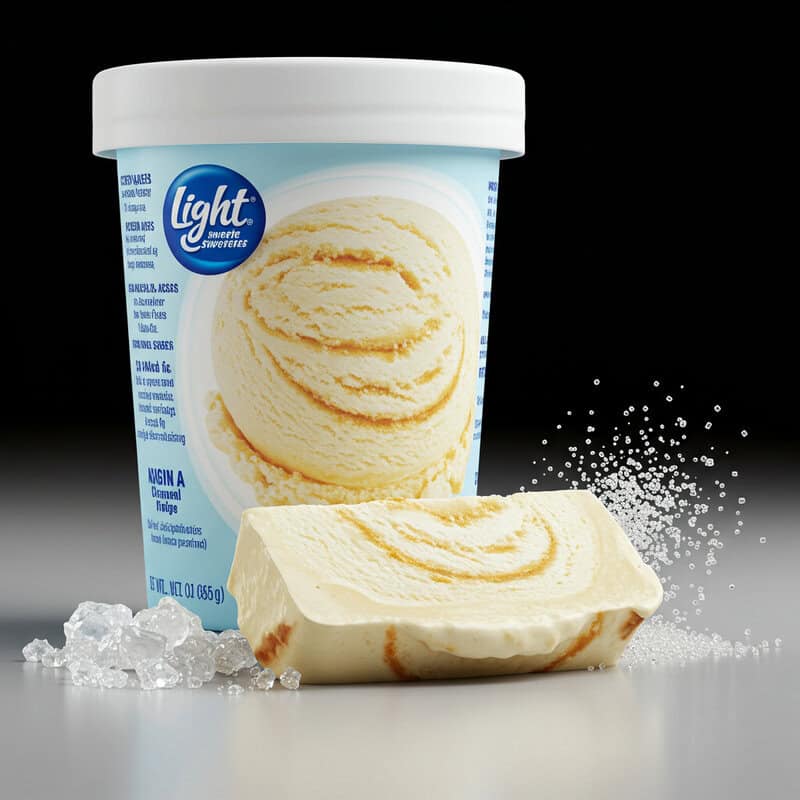
“Light” or “diet” ice creams are often perceived as a smarter dessert choice, but for diabetics, these products can be surprisingly deceptive. To reduce fat and calories, manufacturers frequently add extra sugars and artificial sweeteners to maintain texture and flavor. According to Healthline, some light ice creams contain nearly as much sugar as regular ice cream, and in some cases, even more hidden sweeteners are used to enhance sweetness without increasing calories significantly.
While traditional ice cream is high in both fat and sugar, “light” versions can still provoke sharp blood sugar rises due to their added sugars and rapidly absorbed carbohydrates. Additionally, sugar alcohols and artificial sweeteners—often used in these products—may cause digestive discomfort or gastrointestinal upset for some individuals. The “light” label can lead to overconsumption, as people may underestimate the sugar content or believe larger portions are safe.
It is essential for diabetics to scrutinize the nutrition facts label, paying close attention to both total and added sugar content, as well as serving sizes. For more tips on choosing diabetes-friendly desserts, visit the American Diabetes Association: Sugar and Desserts.
16. Sushi Rolls

Sushi is often considered a healthy meal, but many types of sushi rolls can be problematic for diabetics due to the high content of white rice and sugary sauces. White rice has a high glycemic index and is used in generous portions—sometimes half or more of the roll’s weight—causing rapid blood sugar spikes. According to Healthline, one typical sushi roll can contain the equivalent of more than a cup of white rice, which is quickly digested and absorbed.
Specialty rolls often include additional ingredients such as tempura, imitation crab, sweetened eel sauce, or spicy mayo, all of which can increase the sugar and carbohydrate content. In contrast, simpler options like sashimi (just fish) or basic nigiri (fish over a small mound of rice) have less rice and fewer added sugars, making them somewhat better choices for blood sugar management. However, even these should be consumed in moderation.
To reduce the impact, diabetics can request rolls made with brown rice (if available), avoid or limit sweet sauces, and choose more sashimi or rolls with extra vegetables. For more ideas on making sushi diabetes-friendly, visit the Diabetes Food Hub: Eating Out with Diabetes.
17. Fruit-Flavored Water

Fruit-flavored water is frequently marketed as a refreshing and healthy alternative to soda or juice, but many of these beverages contain hidden sugars and artificial sweeteners that can undermine blood sugar control. Some brands add sugar, high-fructose corn syrup, or concentrated fruit juice to enhance flavor, which can quickly elevate blood glucose levels in diabetics. Even varieties labeled “diet” or “zero-calorie” often use artificial sweeteners such as aspartame or sucralose, which, while not raising blood sugar directly, may impact insulin sensitivity or gut health over time according to Harvard Health.
Unlike these processed options, simply infusing plain water with slices of citrus, cucumber, or berries provides natural flavor without added sugars or chemicals. Many people are misled by packaging that features vibrant images of fruit, not realizing the beverage may contain more sweetener than actual fruit extract.
Diabetics should always read ingredient lists carefully to identify added sugars or artificial sweeteners, and opt for unsweetened or naturally flavored waters whenever possible. For more advice on healthy hydration and reading beverage labels, visit the American Diabetes Association: Healthy Beverages.
18. Restaurant Salads
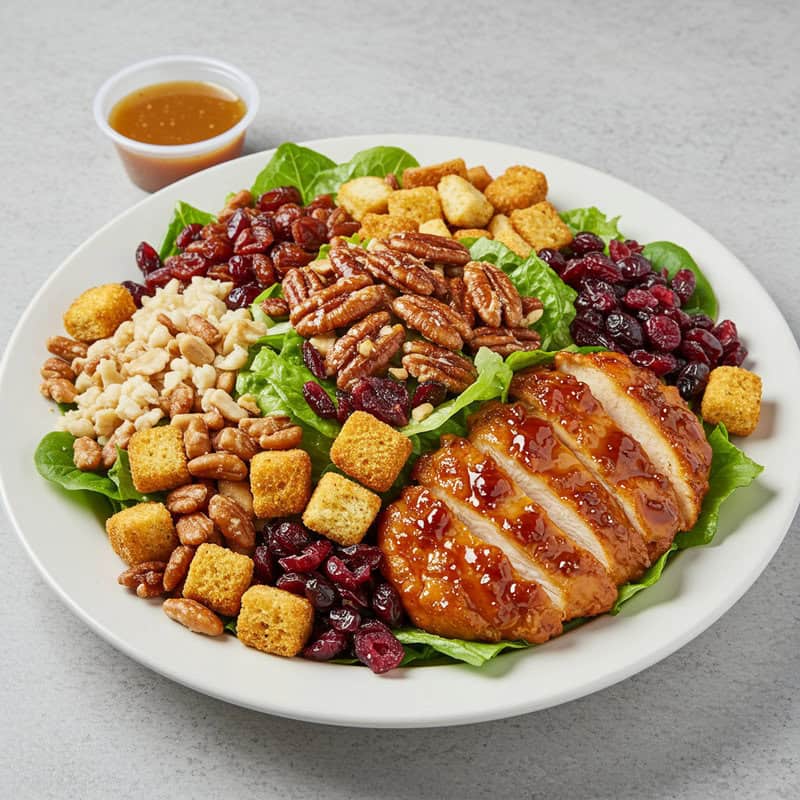
Restaurant salads are often assumed to be a safe and healthy choice for diabetics, but they can be loaded with hidden sugars and refined carbohydrates. Many chain restaurants and fast-casual spots use dressings that contain added sugars, honey, or syrups to enhance flavor. Additionally, toppings such as candied nuts, dried cranberries, croutons, and glazed proteins (like teriyaki chicken) can significantly increase the sugar and calorie content of the salad. According to CDC, some restaurant salads can contain as many calories and as much sugar as a fast-food burger meal.
This means that what looks like a healthy salad could actually contribute to blood sugar spikes and poor diabetes management. The combination of sweetened dressings and sugar-laden toppings can turn a bowl of greens into a high-glycemic meal, especially if the portion sizes are large or extra bread is served on the side.
To make restaurant salads more diabetes-friendly, request dressings on the side, skip sugary toppings, and opt for grilled proteins, extra vegetables, and seeds or nuts without added sugar. For more tips on customizing restaurant meals, visit the Diabetes Food Hub: Eating Out with Diabetes.
19. Nut Butters with Additives
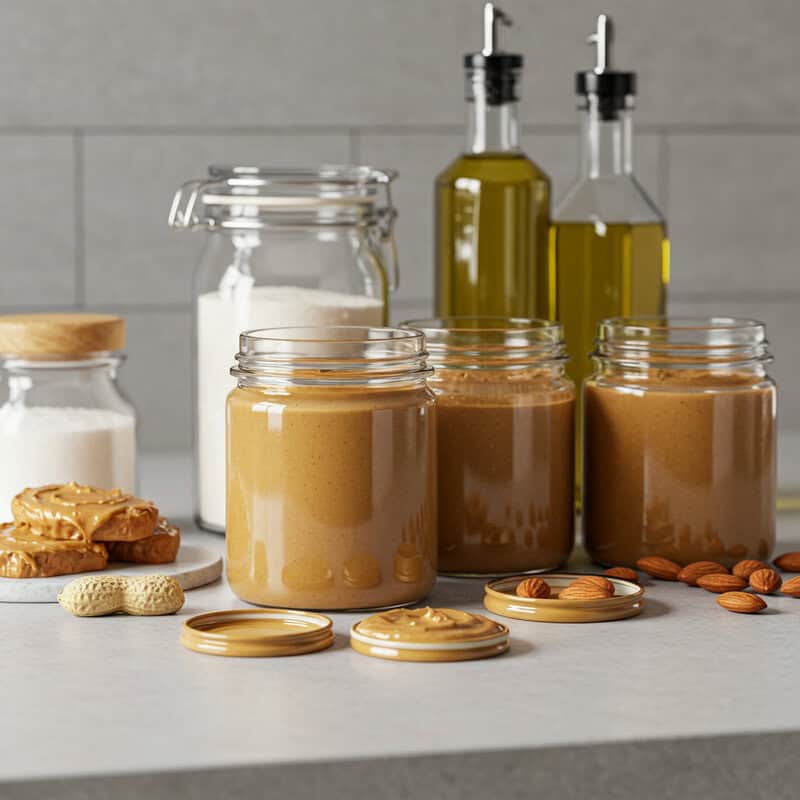
Nut butters, such as peanut or almond butter, are often viewed as a healthy source of protein and healthy fats. However, many commercial nut butters contain added sugars and hydrogenated oils, which can be detrimental for diabetics. Added sugars increase the carbohydrate content, potentially leading to rapid blood sugar spikes, while hydrogenated oils contain trans fats that contribute to inflammation and heart disease risk. According to Healthline, some popular peanut butter brands add sugar, molasses, or palm oil to improve texture and flavor.
In contrast, pure nut butters made with only nuts (and perhaps a pinch of salt) contain no added sugars or unhealthy fats. These versions provide a more stable energy source and a lower glycemic impact. Many consumers are unaware that even “natural” or “reduced-fat” nut butters may contain sweeteners or hydrogenated oils, making label reading essential.
Diabetics should look for nut butters with minimal ingredients—ideally just nuts and salt. Always read the nutrition label and ingredient list to avoid hidden sugars and unhealthy fats. For more information on choosing healthy nut butters, visit the Diabetes Food Hub: The Scoop on Peanut Butter.
20. Energy Bars
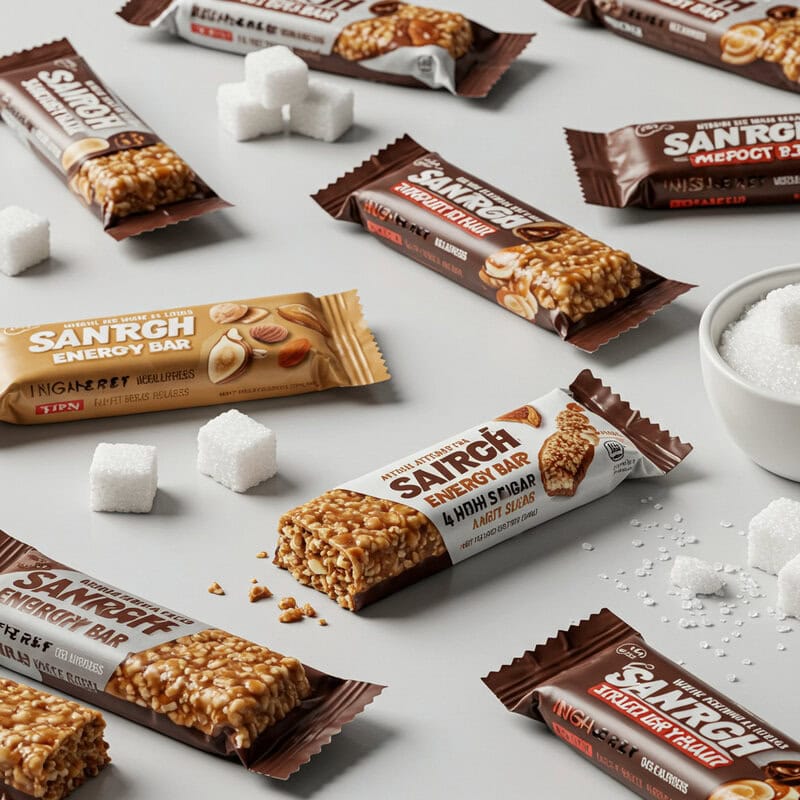
Energy bars are frequently marketed as healthy, convenient snacks or meal replacements for active lifestyles. However, many commercial energy bars are packed with sugars and fast-digesting carbohydrates, making them a poor choice for diabetics. A single bar can contain over 20 grams of sugar and upwards of 40 grams of total carbohydrates, which can cause rapid spikes in blood glucose. According to Consumer Reports, even bars labeled as “natural” or “organic” often use sweeteners like brown rice syrup and cane sugar.
The packaging and marketing of energy bars often highlight protein content, vitamins, or “whole grains,” leading consumers to believe these snacks are inherently healthy. In reality, many energy bars are nutritionally similar to candy bars, especially those with chocolate coatings, sweet add-ins, and minimal fiber. This makes them especially risky for diabetics aiming to manage blood sugar levels.
Diabetics should opt for snacks that are lower in added sugars and refined carbs, such as a small handful of nuts, a hard-boiled egg, or plain Greek yogurt. For more ideas on diabetes-friendly snacks, visit the Diabetes Food Hub: Snack Ideas.
21. Couscous

Couscous is often mistaken for a whole grain, but it is actually a form of refined wheat pasta. This means it lacks the fiber and nutrients found in true whole grains, and its refined nature causes it to be rapidly digested and absorbed, leading to quick spikes in blood sugar. According to Healthline, the glycemic index of couscous is similar to that of white bread, making it less suitable for diabetics compared to whole grains like quinoa or farro.
Whole grains, such as brown rice, barley, bulgur, and quinoa, are richer in fiber, vitamins, and minerals, and they release glucose more slowly into the bloodstream. This slower release helps prevent the sharp rises and falls in blood sugar that refined grains like couscous can cause. Many people choose couscous believing it is a nutritious staple, not realizing that it behaves more like white pasta than a whole grain.
For better blood sugar management, diabetics should replace couscous with true whole grains and read labels carefully to ensure they are getting unprocessed, fiber-rich options. For more information on healthy grain choices, visit the American Diabetes Association: Whole Grains & Diabetes.
22. Packaged Trail Mix
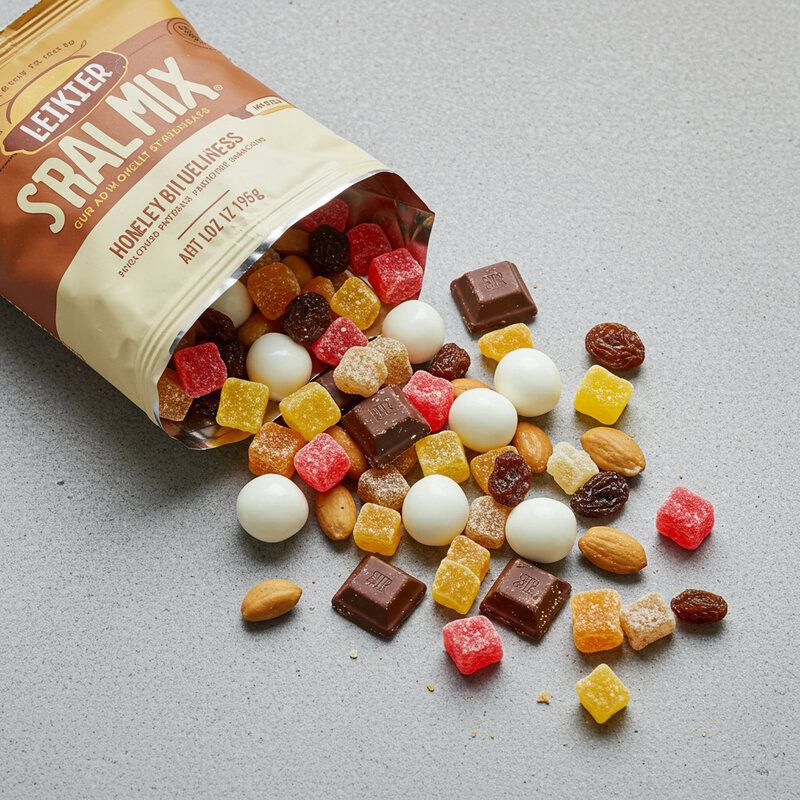
Packaged trail mix is frequently marketed as an energizing, wholesome snack, but many varieties are laden with hidden sugars and unhealthy additives. Pre-made mixes often contain candied fruits, chocolate pieces, yogurt-covered raisins, or honey-roasted nuts—all of which can significantly increase sugar and carbohydrate content. According to Healthline, some commercial trail mixes contain as much as 16 grams of sugar per small serving, turning what appears to be a nutritious snack into a source of rapid blood sugar spikes.
In contrast, making trail mix at home allows diabetics to control exactly what goes in—using only unsweetened dried fruits, raw or dry-roasted nuts, and seeds with no added sugars or oils. DIY versions are not only healthier but also customizable to individual dietary needs and blood sugar considerations. Many consumers are unaware that the seemingly healthy “energy boost” from a store-bought trail mix can actually come from added sweets and syrups.
When purchasing pre-packaged trail mix, diabetics should carefully read ingredient lists and choose products without added sugars, candies, or sweetened dried fruit. For more snack tips and healthy recipes, visit the Diabetes Food Hub: Snack Ideas.
23. Bottled Tea Drinks
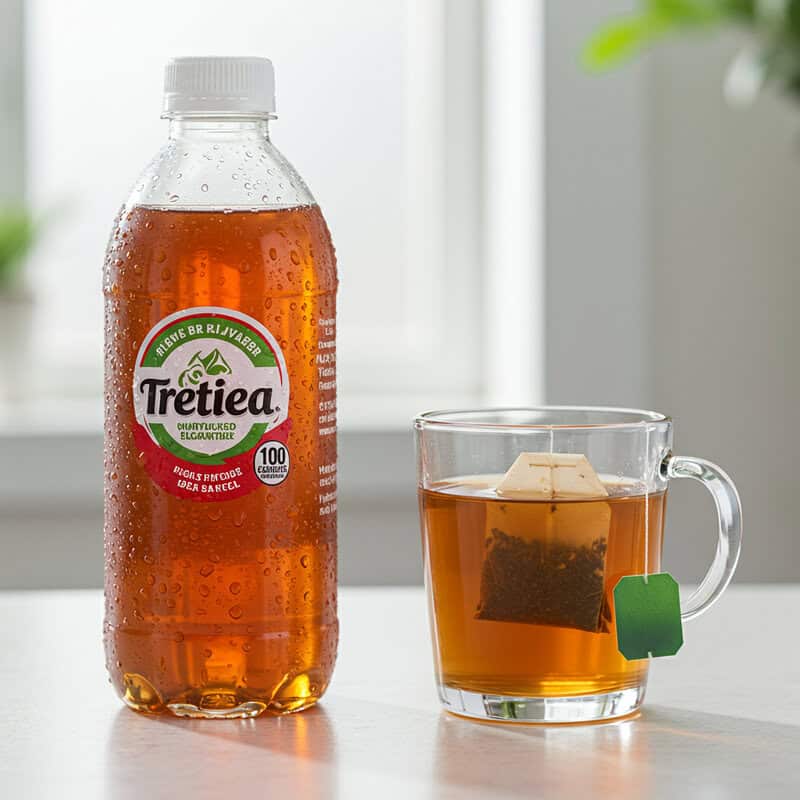
Bottled tea drinks are often marketed as refreshing and healthy alternatives to soda, but many are packed with added sugars that can disrupt blood sugar control. Popular brands of ready-to-drink iced teas can contain as much as 30 grams of sugar per bottle—amounts comparable to regular soft drinks. According to CDC guidelines, these added sugars can quickly elevate blood glucose and contribute to poor diabetes management.
In contrast, home-brewed tea—whether black, green, or herbal—contains no added sugar and allows for complete control over what goes into your cup. Unsweetened tea provides beneficial antioxidants without the glucose spike, and a splash of lemon or a few fresh mint leaves can enhance flavor naturally. Many consumers are misled by labels such as “lightly sweetened,” “natural,” or “healthy,” not realizing that these beverages may still contain significant amounts of sugar or syrup.
For diabetics, it’s best to choose unsweetened bottled teas or, better yet, brew tea at home. Always check nutrition labels for hidden sugars. For more beverage tips and healthy swaps, visit the American Diabetes Association: Healthy Beverages.
24. Canned Fruit in Syrup
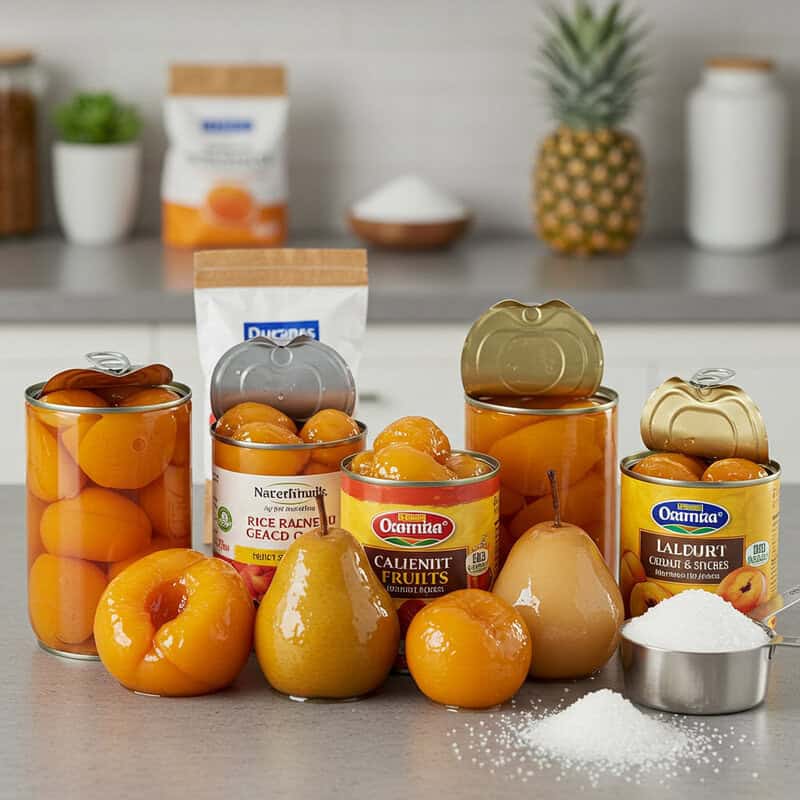
Canned fruit often appears to be a convenient and healthy way to enjoy fruit year-round, but the syrup used in many canned products is loaded with added sugars. Fruits packed in “heavy syrup” or “light syrup” are soaked in sugar solutions that significantly increase the carbohydrate content, leading to rapid spikes in blood glucose. According to Healthline, a half-cup serving of peaches in heavy syrup can contain over 20 grams of sugar—much of it added rather than naturally occurring.
By contrast, canned fruits labeled as “packed in juice” or “packed in water” contain far less added sugar. While fruit in juice may still have a higher sugar content than fresh fruit, it is a better alternative to syrup-soaked varieties. The best choice is fruit canned in water or its own juice, and draining and rinsing the fruit can further reduce sugar content.
For diabetics, it is important to read labels carefully and avoid any product listing syrup or added sugar among the first ingredients. For more guidance on selecting diabetes-friendly fruits, visit the American Diabetes Association: Fruit and Diabetes.
25. Cornflakes
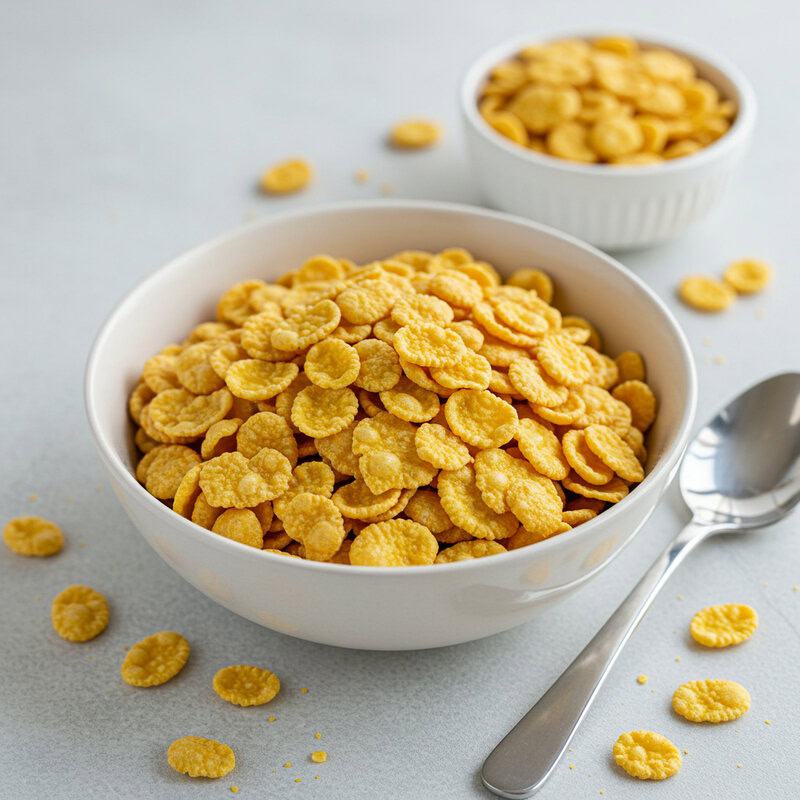
Cornflakes are a classic breakfast staple that many assume to be a healthy start to the day. However, for diabetics, cornflakes can be especially problematic due to their high glycemic index and low fiber content. Made from finely milled corn, these flakes are quickly digested and converted to glucose, resulting in rapid and significant spikes in blood sugar. According to Harvard Health, cornflakes have a glycemic index of 81, which is higher than many sweetened breakfast cereals.
In contrast, cereals that are high in fiber—such as steel-cut oats, bran flakes, or muesli with no added sugar—are digested more slowly and have a less dramatic impact on blood glucose. These options help maintain steadier energy levels and support better blood sugar management throughout the morning. Cornflakes, on the other hand, often contain added sugars and provide little satiety, leading to hunger soon after eating.
Diabetics should choose whole grain cereals that list whole grains as the first ingredient and contain at least 3-5 grams of fiber per serving. For more on breakfast choices, visit the American Diabetes Association: Diabetes Superstar Foods.
26. Honey

Honey is often regarded as a healthier and more “natural” alternative to table sugar, but this belief can be misleading—especially for diabetics. Although honey does contain trace vitamins and antioxidants, its primary components are glucose and fructose, making it a concentrated source of sugar. The glycemic index of honey is similar to that of table sugar, and both can raise blood glucose levels rapidly when consumed in typical portions. According to Healthline, honey has a glycemic index between 58 and 61, while table sugar sits at about 65.
Despite its “natural” status, honey impacts blood sugar in much the same way as other sweeteners. Many people mistakenly believe that substituting honey for sugar in recipes or beverages makes them significantly healthier, but for diabetics, this swap does not reduce the risk of blood sugar spikes. Furthermore, the liquid form of honey can make it easy to consume large amounts quickly.
Diabetics should use honey sparingly and view it as an added sugar—occasionally permissible but not preferable. For more information on choosing and using sweeteners wisely, visit the American Diabetes Association: Sugar and Desserts.
27. Store-Bought Muffins
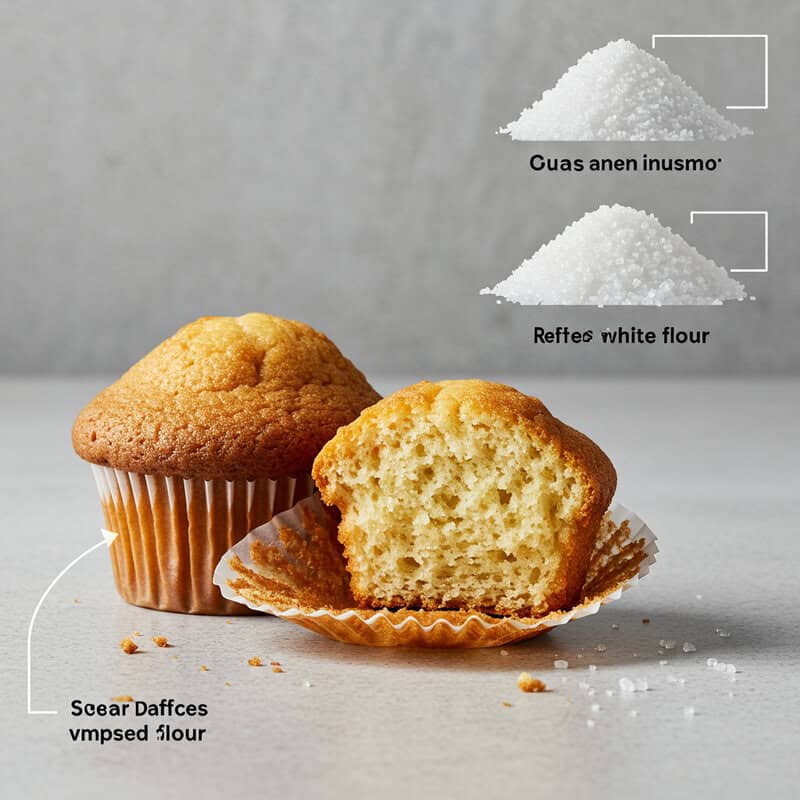
Store-bought muffins are often marketed as convenient breakfast or snack options, but they typically contain high levels of sugar and refined white flour. These ingredients cause muffins to have a high glycemic index, resulting in rapid spikes and subsequent crashes in blood glucose levels. According to Healthline, a single commercial muffin can contain more than 30 grams of sugar—sometimes rivaling the sugar content of a cupcake or doughnut.
In addition to added sugars, many store-bought muffins are made with refined flour that lacks fiber and essential nutrients, further accelerating the absorption of carbohydrates. Even muffins labeled as “bran” or “whole grain” often contain a significant amount of white flour and sweeteners to improve taste and texture, misleading consumers into thinking they are healthier choices.
Homemade muffins can be made far more diabetes-friendly by using whole grain flours, reducing the amount of sweetener, and adding fiber-rich ingredients like nuts, seeds, or grated vegetables. For more tips and diabetes-friendly baking ideas, visit the Diabetes Food Hub: Baked Goods Recipes.
28. Pasta Made from Refined Flour
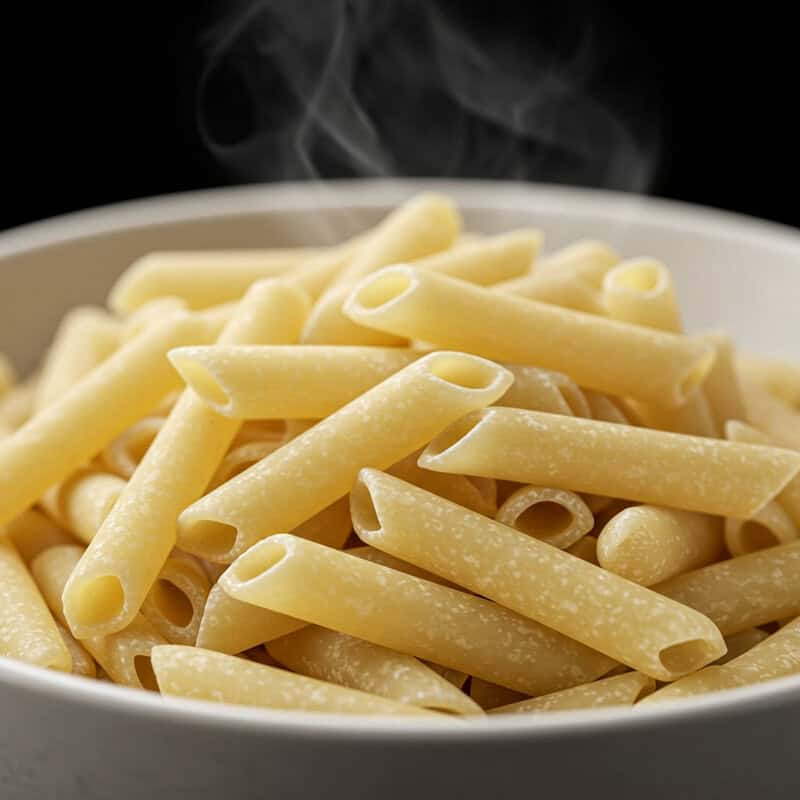
Pasta made from refined white flour is a staple in many diets but poses significant challenges for blood sugar management in diabetics. White pasta is rapidly digested and causes a swift release of glucose into the bloodstream, resulting in quick and pronounced spikes in blood sugar. According to Healthline, refined pasta has a much higher glycemic index than whole wheat or alternative pastas, making it less suitable for those needing to maintain stable glucose levels.
Whole wheat pasta and legume-based options—such as those made with lentils or chickpeas—contain more fiber and protein, which help slow carbohydrate absorption and minimize blood sugar fluctuations. These alternatives digest more slowly, providing longer-lasting energy and greater satiety. Many people assume that all pasta is created equal, but the type of flour used makes a substantial difference for diabetics.
Diabetics should consider swapping traditional white pasta for whole grain or legume-based varieties, and pairing pasta dishes with plenty of non-starchy vegetables and lean proteins. For more information on diabetes-friendly pasta choices, visit the American Diabetes Association: Whole Grains & Diabetes.
29. Reduced-Fat Peanut Butter
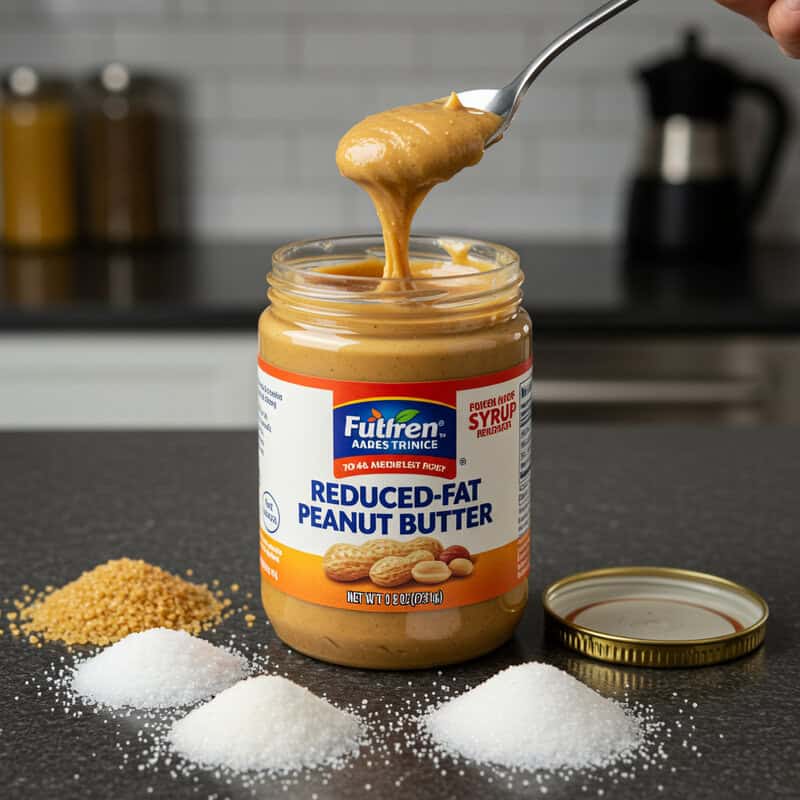
Reduced-fat peanut butter is commonly marketed as a healthier alternative to regular peanut butter, but for diabetics, it can be a hidden source of concern. To replace the flavor and texture lost with fat reduction, manufacturers often add sugars, corn syrup solids, and fillers such as maltodextrin. These additives increase the carbohydrate content, which can lead to faster and higher spikes in blood glucose. According to Healthline, reduced-fat peanut butter usually contains more sugar and less of the healthy fats that make natural peanut butter a beneficial choice.
In contrast, regular peanut butter—especially those labeled “natural” or made with only peanuts and possibly a pinch of salt—retains its heart-healthy monounsaturated fats and contains fewer unnecessary additives. The fat content in regular peanut butter can actually help slow the absorption of carbohydrates, supporting better blood sugar control. Many consumers don’t realize that by opting for reduced-fat varieties, they may be sacrificing nutritional quality for the illusion of healthiness.
For the best choice, diabetics should read ingredient labels and select peanut butters with minimal ingredients: ideally, just peanuts and salt. For more tips on choosing healthy nut butters, visit the Diabetes Food Hub: The Scoop on Peanut Butter.
30. Restaurant Stir-Fries

Restaurant stir-fries are often seen as a healthy way to enjoy vegetables and lean protein, but hidden sugars in the sauces can turn these dishes into a glycemic hazard for diabetics. Sauces like teriyaki, sweet and sour, hoisin, and even some soy sauces are typically sweetened with sugar, honey, or corn syrup to enhance flavor and create a glossy finish. According to Healthline, a single serving of restaurant stir-fry can contain several teaspoons of added sugar, which can quickly elevate blood glucose levels.
Home-cooked stir-fries, on the other hand, allow greater control over ingredients and sauces, making it easier to limit or avoid added sugars and excess starches. Many takeout versions also use thickening agents like cornstarch, which can further increase the carbohydrate content. People dining out may not realize just how much sugar is hidden in the seemingly savory sauces of their favorite stir-fry dishes.
When ordering stir-fries at a restaurant, diabetics should ask for sauces on the side, request less or no added sugar, and choose dishes with more vegetables and lean proteins. For more advice on navigating restaurant menus, visit the Diabetes Food Hub: Eating Out with Diabetes.
31. Frozen Yogurt
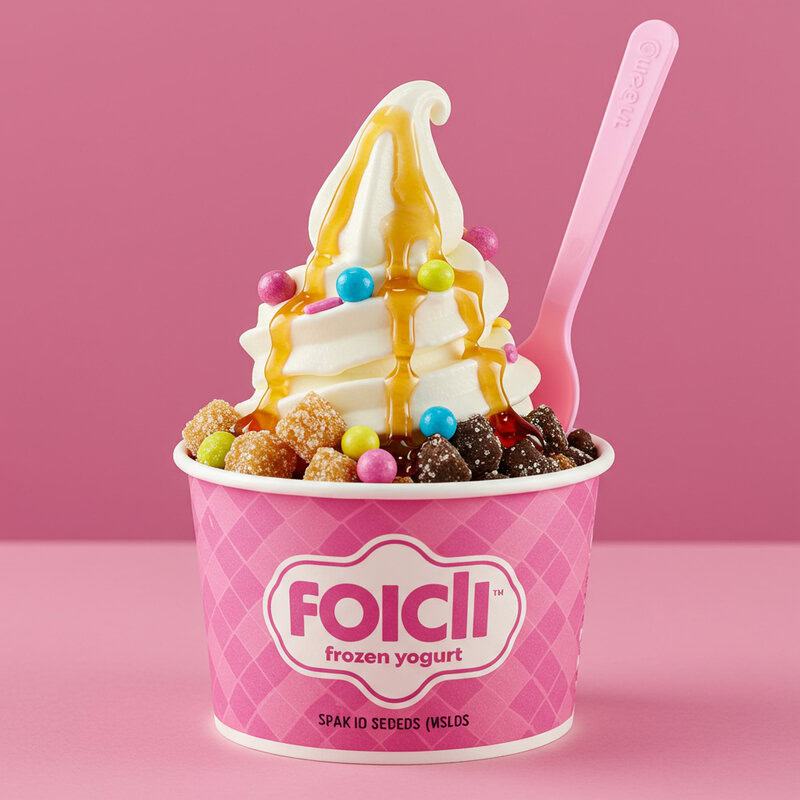
Frozen yogurt is commonly promoted as a healthier dessert alternative to ice cream, but for diabetics, it can be just as problematic due to its high sugar content. Many frozen yogurt products contain significant amounts of added sugars to enhance flavor and texture, sometimes even exceeding the sugar levels found in regular ice cream. According to Healthline, a typical half-cup serving of frozen yogurt can contain 17-25 grams of sugar, not including additional sweet toppings.
The self-serve nature of many frozen yogurt shops, combined with the availability of sugary toppings like candy, syrups, and sweetened fruit, can easily turn a small treat into a high-glycemic dessert. Even fruit-flavored frozen yogurts often contain added sugars and fruit purees that increase carbohydrate content. The health halo surrounding frozen yogurt can lead people to underestimate portion sizes and the total sugar consumed.
For diabetics, moderation is key. Opt for the smallest portion, choose plain or unsweetened varieties if available, and top with fresh berries or nuts instead of candies or syrups. For more advice on smart dessert choices, visit the American Diabetes Association: Sugar and Desserts.
32. Milk Alternatives
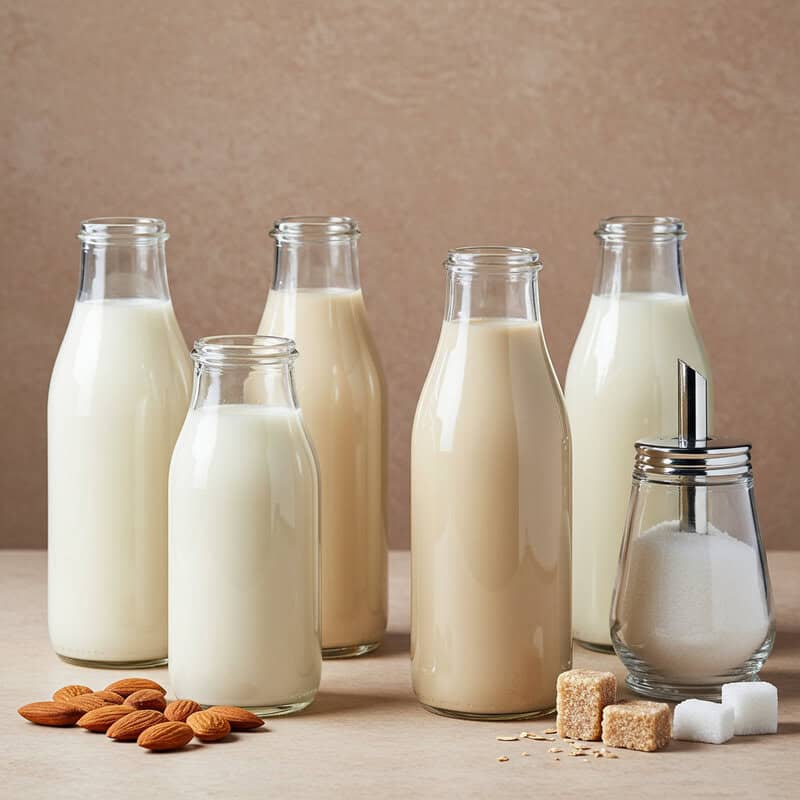
Milk alternatives such as almond, soy, and oat milk have become increasingly popular, especially among those seeking lactose-free or plant-based options. However, many of these beverages—especially flavored or “original” varieties—contain significant amounts of added sugars. Sweetened versions can have as much as 10-16 grams of sugar per cup, which can quickly lead to blood glucose spikes in diabetics. According to Healthline, unsweetened almond milk typically contains less than 1 gram of sugar per cup, whereas sweetened versions contain much more.
Oat and soy milks, in particular, can be high in carbohydrates even without added sugars, and sweetened versions increase the sugar load even further. Many people assume that all milk alternatives are healthy simply because they are plant-based, but only unsweetened varieties offer a low-glycemic option suitable for diabetes management.
Diabetics should always check nutrition labels and ingredient lists, selecting milk alternatives that are specifically labeled “unsweetened.” This small change can make a significant difference in daily sugar intake and blood sugar control. For more tips on choosing dairy and nondairy beverages, visit the American Diabetes Association: Healthy Beverages.
33. Pre-Made Smoothies

Pre-made smoothies from grocery stores or smoothie shops are often marketed as healthy, nutrient-packed beverages, but many contain high levels of sugar and calories that can be problematic for diabetics. Bottled smoothies and shop-bought blends often include fruit juices, added sugars, sweetened yogurt, or even ice cream, significantly raising both the sugar and calorie content. According to Healthline, a single bottle of some commercial smoothies can contain over 50 grams of sugar—an amount that can rival or exceed many sodas.
Homemade smoothies, by contrast, offer complete control over ingredients and portion sizes. By using whole fruits (especially berries), unsweetened milk alternatives or plain yogurt, and adding leafy greens or chia seeds, you can keep both sugar content and glycemic impact lower. Many people are unaware that the “healthy” perception of store-bought smoothies often hides a dessert-like sugar load.
For safer blending at home, diabetics should stick to non-starchy vegetables, low-glycemic fruits, protein sources, and healthy fats. Avoid adding honey, agave, or fruit juice. For more guidance on diabetes-friendly smoothies, visit the Diabetes Food Hub: Smoothie Basics.
34. Instant Noodles
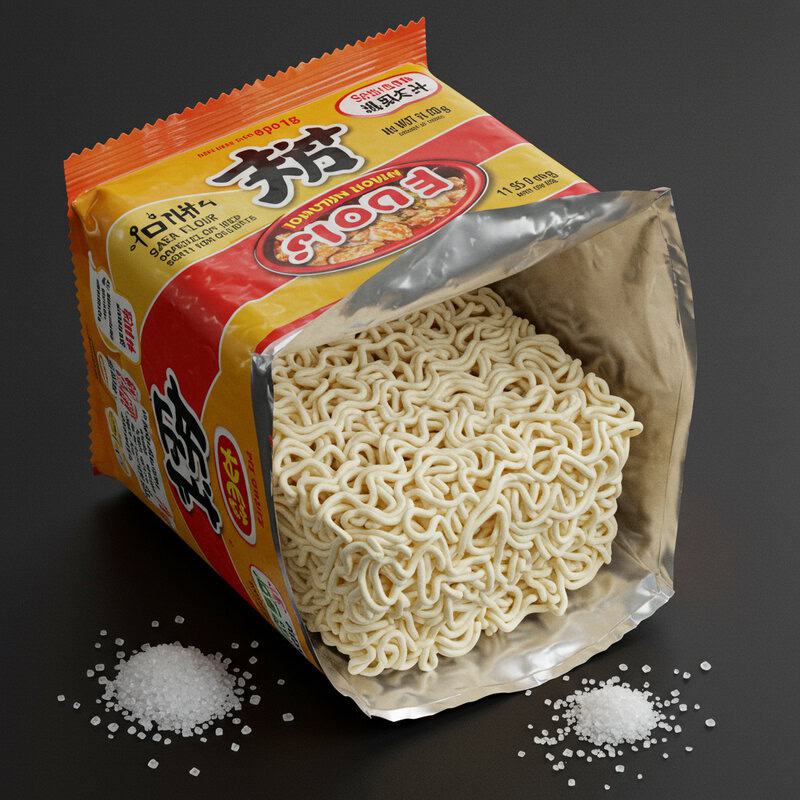
Instant noodles are a convenient and popular meal choice, but they are far from ideal for diabetics due to their high content of refined carbohydrates and sodium. The noodles are typically made from white flour, which is rapidly digested and converted to glucose, leading to quick spikes in blood sugar. Additionally, the seasoning packets found in most instant noodle packages are loaded with sodium and, in some cases, added sugars or artificial flavors. According to Healthline, a single serving of instant noodles can contain over 40 grams of carbs and nearly 900 milligrams of sodium.
In contrast, whole grain or legume-based noodles, such as those made from brown rice, buckwheat (soba), or lentils, provide more fiber and protein, helping to slow digestion and minimize blood sugar fluctuations. Many people choose instant noodles for their ease and cost, but these benefits come with significant drawbacks for blood sugar control and overall health.
For healthier swaps, diabetics should look for whole grain noodle options and add plenty of non-starchy vegetables and lean proteins to noodle dishes. For more diabetes-friendly meal ideas, visit the Diabetes Food Hub: Noodle Dishes.
35. Fruit Snacks
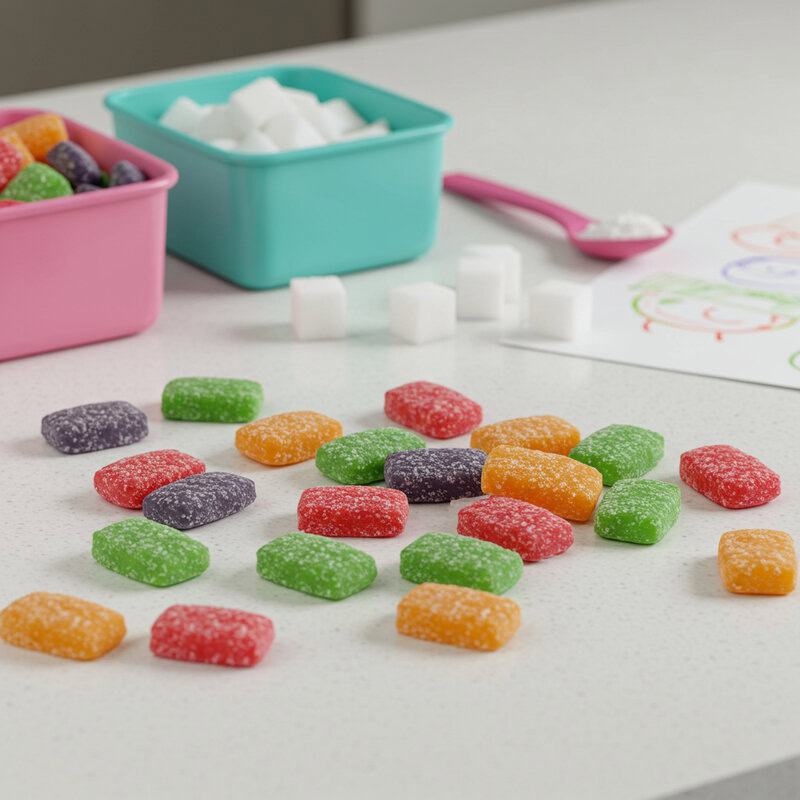
Fruit snacks are commonly marketed as a healthy treat, particularly for children, but they are often little more than sugary candy in disguise. Most fruit snacks are made from fruit juice concentrates, corn syrup, and added sugars, with minimal actual fruit content or fiber. As a result, they deliver a concentrated dose of sugar that is quickly absorbed, causing rapid spikes in blood glucose. According to Healthline, a small pouch of fruit snacks can contain up to 12 grams of sugar—nearly as much as some candy bars.
In stark contrast, real fruit contains natural sugars paired with water, vitamins, minerals, and fiber, which slows down sugar absorption and provides more lasting satiety. Many parents and adults are misled by packaging that features images of fruit and claims of vitamin C or “made with real fruit,” not realizing the snack inside is highly processed and far from its natural origins.
For both kids and adults with diabetes, it’s best to choose whole, fresh fruit or small portions of unsweetened dried fruit as a snack. For more healthy snack ideas, visit the Diabetes Food Hub: Snack Ideas.
36. Crackers
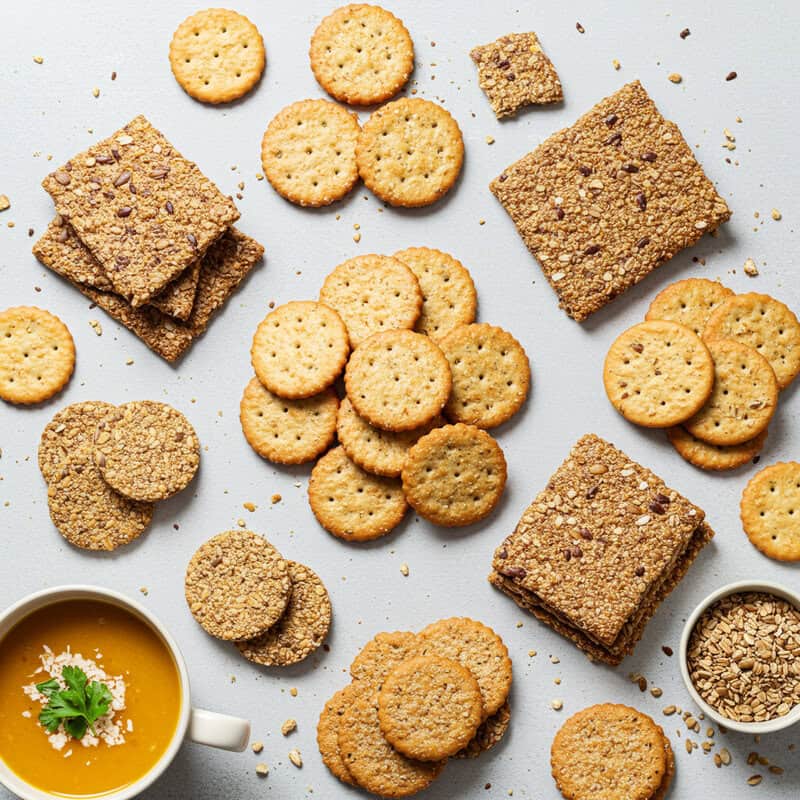
Crackers are a popular snack and accompaniment to soups or spreads, but many varieties are made from refined flours and contain added sugars, making them a poor choice for diabetics. These refined ingredients are rapidly digested, leading to quick spikes in blood glucose. Some crackers are also flavored with honey, malt, or even corn syrup, further increasing their glycemic impact. According to Healthline, most standard crackers offer minimal fiber and are similar to white bread in terms of their effect on blood sugar.
Whole grain or seed-based crackers provide a much better alternative, as they are higher in fiber, protein, and healthy fats. These nutrients help slow carbohydrate absorption and promote more stable blood sugar levels. However, it’s important to note that not all “multigrain” or “whole wheat” crackers are truly whole grain—many still contain refined flour as a primary ingredient.
When shopping for crackers, diabetics should look for products where whole grains or seeds are listed as the first ingredient and aim for at least 3 grams of fiber per serving. For more snack label tips and healthy cracker recipes, visit the Diabetes Food Hub: Snack Ideas.
37. Cereal Bars

Cereal bars are frequently marketed as quick, healthy breakfast or snack options, but in reality, many are packed with concentrated sugars and syrups that can dramatically raise blood glucose. These bars often contain ingredients such as glucose syrup, high fructose corn syrup, honey, and various fruit concentrates, making them more similar to candy bars than a bowl of wholesome cereal. According to Healthline, many popular cereal bars contain 10-18 grams of sugar per serving, sometimes exceeding the sugar content found in a serving of sugary breakfast cereal.
Unlike actual cereal, which can be paired with milk and fresh fruit for added fiber and protein, cereal bars typically lack these beneficial nutrients. The processing required to bind ingredients into bar form often results in a loss of fiber and the addition of unhealthy fats or artificial additives. Many people are misled by packaging that emphasizes whole grains or vitamins, without realizing the bar’s sugar content is just as high as many desserts.
Diabetics should always check the nutrition label for total and added sugars per serving and seek out bars that are lower in sugar, higher in fiber, and made with whole grain ingredients. For more tips on reading labels and healthy snack options, visit the Diabetes Food Hub: Snack Ideas.
38. Packaged Hummus with Add-Ons

Packaged hummus has gained popularity as a convenient and seemingly healthy snack, but many flavored varieties come with added oils, starches, and sugars that can compromise their suitability for diabetics. Flavors like roasted red pepper, caramelized onion, or sweet chili often include ingredients such as canola oil, modified food starch, or even brown sugar to enhance taste and texture. These additions can increase the carbohydrate and fat content, leading to higher blood glucose and reduced nutritional value. According to Healthline, some commercial hummus brands also use preservatives and unnecessary fillers.
Traditional hummus, made from chickpeas, tahini, olive oil, lemon juice, and garlic, is naturally high in fiber, plant-based protein, and healthy fats—all of which help slow carbohydrate absorption and support steady blood sugar. By contrast, many packaged varieties sacrifice these benefits for extended shelf life and stronger flavors, often at the expense of health.
For the healthiest option, diabetics should consider making hummus at home using simple, whole ingredients and limiting added oils or sweeteners. For more on homemade hummus recipes and healthy dip ideas, visit the Diabetes Food Hub: Snacks & Appetizers.
39. Sweetened Applesauce

Store-bought applesauce is often viewed as a healthy snack, particularly for children and those seeking a light dessert. However, many commercial varieties are sweetened with added sugars or high fructose corn syrup, significantly increasing their glycemic impact. A single serving of sweetened applesauce can contain up to 20 grams of sugar, much of it added rather than naturally occurring. According to Healthline, sweetened applesauce can cause blood sugar spikes that are nearly as sharp as those from eating candy.
By comparison, unsweetened applesauce contains only the natural sugars found in apples and provides a more moderate effect on blood glucose. Homemade applesauce made with fresh apples and no added sugar is an even better option, as it retains the fruit’s natural fiber and nutrients without unnecessary sweeteners. Many people are surprised to learn how much extra sugar is hidden in flavored or sweetened store-bought versions.
Diabetics should always opt for unsweetened applesauce and check labels carefully for added sugars or syrups. Better yet, making applesauce at home allows complete control over ingredients. For more healthy snack and dessert ideas, visit the Diabetes Food Hub: Baked Goods Recipes.
40. Sweet Corn

Sweet corn is a popular vegetable, often enjoyed grilled, boiled, or added to salads and soups. However, it is higher in natural sugars and starches compared to most non-starchy vegetables. This means that sweet corn can cause a noticeable rise in blood glucose, especially when consumed in large portions. According to Healthline, one cup of cooked sweet corn contains about 27 grams of carbohydrates, placing it in the same category as starchy foods like potatoes and peas.
In contrast, non-starchy vegetables such as leafy greens, broccoli, cauliflower, and zucchini have much lower carbohydrate content and glycemic impact. These vegetables are better choices for maintaining steady blood sugar levels and can be eaten more liberally. Many people assume corn is as harmless as other vegetables, not realizing its higher natural sugar and starch content can be problematic for diabetics.
Diabetics do not have to avoid sweet corn entirely but should practice portion control—limiting servings to half a cup and pairing it with protein or fiber-rich foods to slow digestion. For more on managing starchy vegetable intake and healthy swaps, visit the American Diabetes Association: Non-Starchy Vegetables.
41. Teriyaki Sauce

Teriyaki sauce is a popular condiment for stir-fries, grilled meats, and rice dishes, but it often contains surprisingly high amounts of sugar. Many commercial bottled teriyaki sauces list sugar, corn syrup, or honey as a primary ingredient, with some brands containing up to 9 grams of sugar per tablespoon. According to Healthline, the sugar content in store-bought teriyaki sauce can quickly add up, especially when used as a marinade or glaze over an entire meal.
Homemade teriyaki sauce can be tailored to reduce or eliminate added sugars by using low-sodium soy sauce, fresh ginger, garlic, and a sugar substitute or minimal honey for flavor. This allows for better control over both sodium and carbohydrate content. Many people are unaware of how quickly bottled sauces can turn a seemingly healthy meal into a source of excess sugar and calories.
Diabetics should use teriyaki sauce sparingly and always check nutrition labels for sugar content. Consider lighter alternatives like a splash of low-sodium soy sauce, fresh citrus, or vinegar-based dressings to season food without the sugar spike. For more healthy sauce ideas, visit the Diabetes Food Hub: Sauces and Dressings.
42. Coleslaw
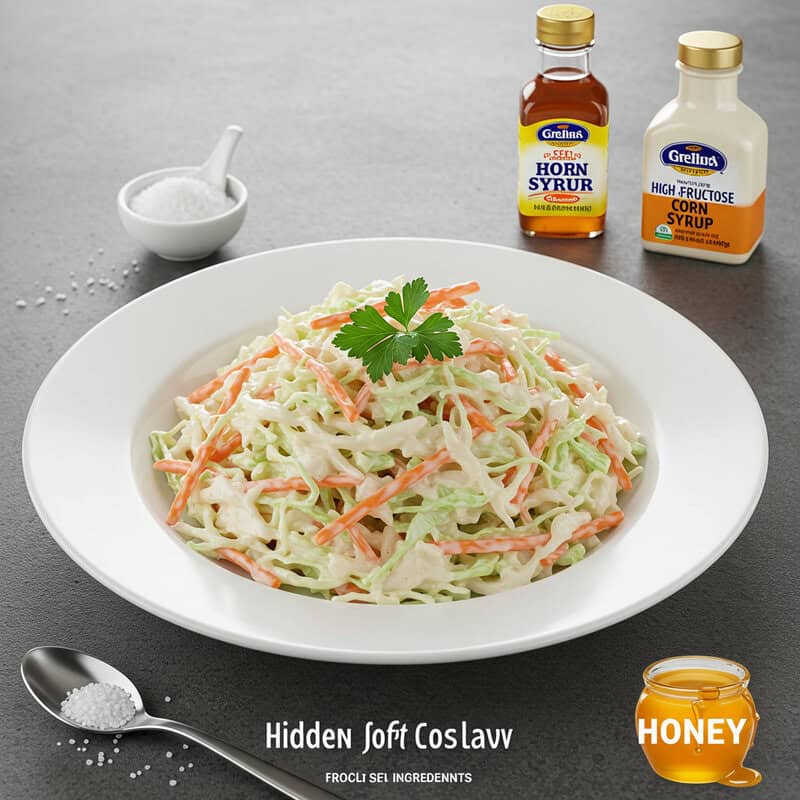
Coleslaw is often chosen as a side dish with the assumption that it’s a healthy vegetable option. However, most store-bought and restaurant versions are made with dressings that contain added sugar, honey, or even high-fructose corn syrup to balance the tang of vinegar and mayonnaise. According to Healthline, a single serving of prepared coleslaw can have up to 15 grams of sugar, much of it from added sweeteners rather than the vegetables themselves.
This added sugar can turn cabbage—naturally low in carbohydrates—into a high-glycemic side that may quickly spike blood glucose levels. Many people are surprised to learn that their “healthy” slaw is actually a source of hidden sugars, especially when consumed alongside other carb-heavy meal components like buns or fries.
For a healthier option, diabetics should make coleslaw at home using fresh cabbage, carrots, and a dressing of plain Greek yogurt, a splash of vinegar, and seasonings—omitting or minimizing any added sugar. This approach preserves the fiber and crunch of the vegetables while keeping the glycemic load low. For more diabetes-friendly salad recipes, visit the Diabetes Food Hub: Salads.
43. Tomato Soup
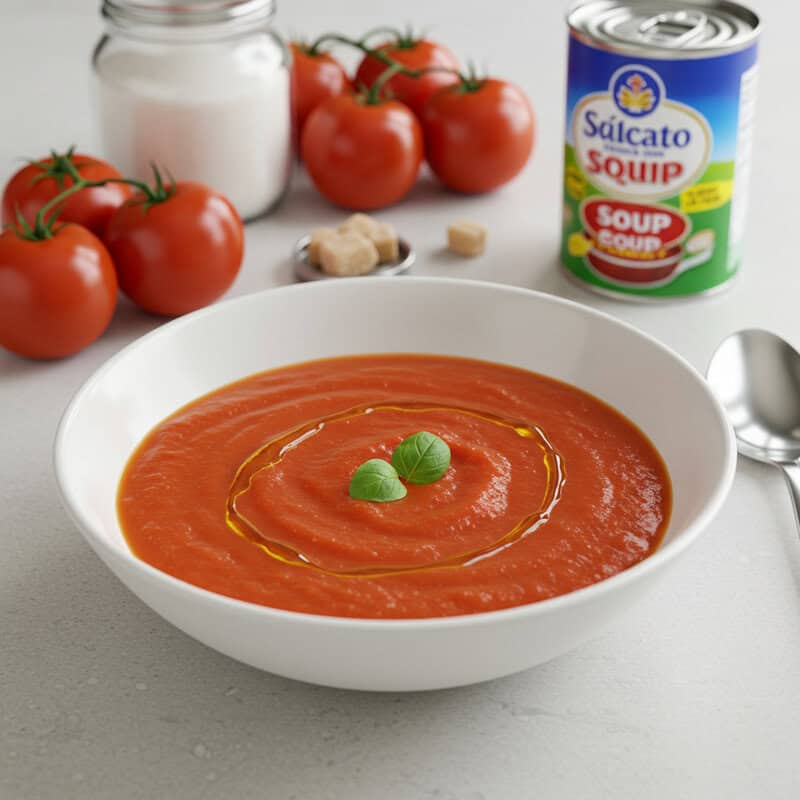
Tomato soup is a classic comfort food, but many canned and store-bought versions contain significant amounts of added sugar to cut the natural acidity of tomatoes and enhance flavor. Some brands can have up to 12 grams of sugar per serving, turning what seems like a healthy vegetable-based soup into a source of hidden carbohydrates. According to Healthline, these added sugars can quickly elevate blood glucose, particularly when paired with typical accompaniments like bread or crackers.
Homemade tomato soup, on the other hand, allows for full control over ingredients and the option to skip added sweeteners entirely. Using fresh or no-salt-added canned tomatoes, herbs, garlic, and a splash of olive oil results in a flavorful soup with a much lower glycemic impact. Many people are unaware of how much sugar is present in processed soups, assuming all vegetable soups are equally healthy.
To make the healthiest choice, diabetics should carefully read nutrition labels and ingredients lists when selecting canned soups. Choosing products labeled “no added sugar” or making soup at home are the best ways to avoid unnecessary sugar. For more healthy soup recipes, visit the Diabetes Food Hub: Soups.
44. Milk Chocolate

Milk chocolate is a beloved treat enjoyed by many, but it poses significant challenges for diabetics due to its high sugar and fat content. Most commercial milk chocolates contain large amounts of added sugar and milk solids, which can cause rapid blood glucose spikes and contribute to overall calorie intake. According to Healthline, a standard milk chocolate bar typically contains 20-25 grams of sugar per serving, making it far less suitable for blood sugar management than darker varieties.
In contrast, dark chocolate (with 70% or higher cocoa content) generally contains less sugar and more antioxidants, making it a better—but still occasional—choice for those with diabetes. However, even dark chocolate should be consumed in moderation, as it still contains some sugar and fat. Many people are tempted to indulge in milk chocolate under the assumption that a small amount is harmless, but portion size can quickly add up and undermine glucose control.
Diabetics who wish to enjoy chocolate should opt for small servings of dark chocolate, check nutrition labels carefully, and be mindful of overall carbohydrate intake. For more on enjoying sweets in moderation, visit the American Diabetes Association: Sugar and Desserts.
45. Fruit Canned in Light Syrup
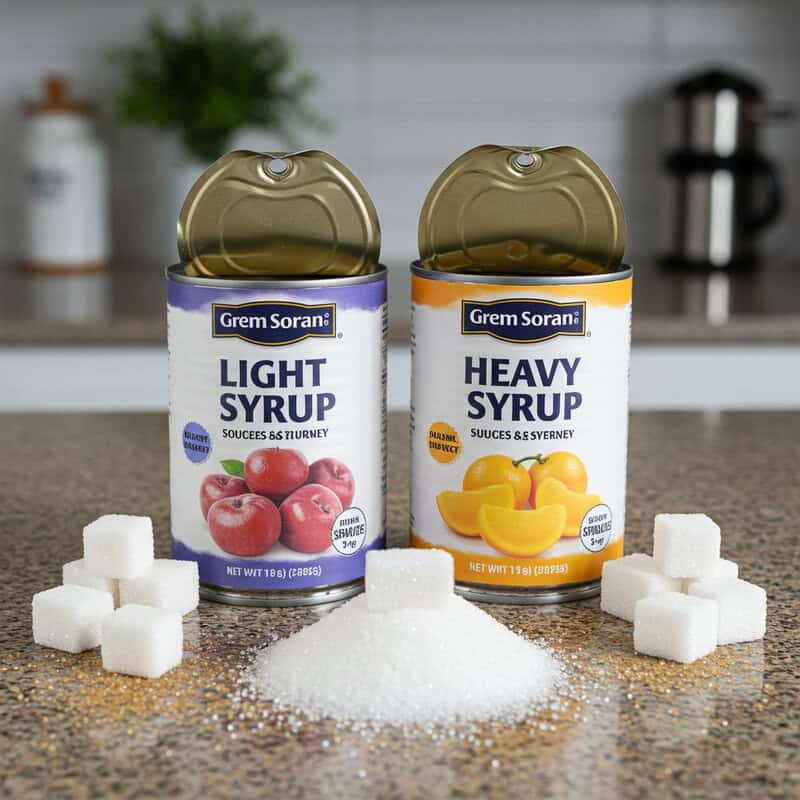
Fruit canned in “light syrup” is often perceived as a healthier choice compared to fruit in “heavy syrup,” but the difference is largely in the concentration of added sugar, not in the elimination of it. “Light syrup” still contains a sugar solution, just slightly less sweet and less dense than its heavy counterpart. According to Healthline, even fruit canned in light syrup can contain 13-17 grams of added sugar per half-cup serving, which can cause significant blood glucose spikes for diabetics.
In contrast, fruit canned in water or in its own juice has no added sugars and preserves more of the fruit’s natural nutritional benefits. While fruit in its own juice does contain natural sugars, it is a better option than any syrup-packed variety. Draining and rinsing canned fruit can help reduce sugar content further, but choosing products with no added sugar is the safest bet.
For the healthiest fruit choices, diabetics should read labels and seek out options marked “no sugar added” or “packed in water.” When possible, opt for fresh or frozen fruit, which are free from added sweeteners. For more guidance, visit the American Diabetes Association: Fruit and Diabetes.
46. Apples with Caramel Dip
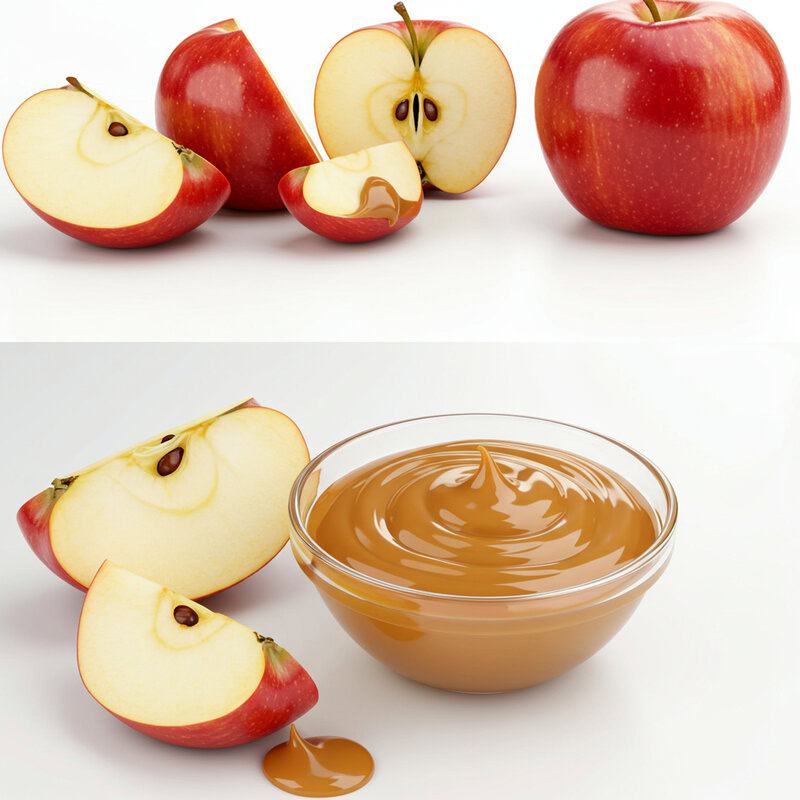
Apples are naturally sweet and packed with fiber, making them a healthy choice for most people. However, pairing apple slices with caramel dip transforms this wholesome snack into a sugar-laden treat that can quickly spike blood glucose. Commercial caramel dips are typically made with high fructose corn syrup, sugar, and artificial flavors, often containing more than 15 grams of added sugar in just a small serving. According to Healthline, these sugary dips can negate the benefits of fruit by overwhelming it with empty calories and rapidly absorbed carbohydrates.
Plain apples provide natural sweetness, fiber, and vitamins without the need for sugary accompaniments. When paired with caramel or other sweet dips, the overall glycemic impact is significantly increased, turning a healthy snack into a dessert-like indulgence. Many snack packs targeted at children and adults alike include these dips, misleading consumers about the true healthfulness of the option.
For a diabetes-friendly snack, enjoy apples on their own or try making a homemade dip using Greek yogurt, cinnamon, and a touch of vanilla extract for flavor. For more healthy snack swaps and recipes, visit the Diabetes Food Hub: Snacks & Appetizers.
47. Baked Beans

Baked beans are a staple at many meals and picnics, often thought of as a wholesome source of plant-based protein and fiber. However, most canned baked beans contain added sugars—such as brown sugar, molasses, or high fructose corn syrup—to achieve their signature sweet flavor. According to Healthline, a half-cup serving of canned baked beans can contain up to 12 grams of sugar, making them a hidden source of rapid blood glucose spikes for diabetics.
In contrast, homemade baked beans or unsweetened canned beans (like plain navy, kidney, or black beans) allow for better control over sugar content and seasoning. By preparing beans at home, diabetics can use herbs, spices, and a modest amount of tomato sauce or low-sugar barbecue sauce to enhance flavor without the excess sugar. Many people are surprised to learn that a seemingly “savory” dish like baked beans can, in fact, rival dessert in its sugar content.
When choosing canned beans, always check the nutrition label for added sugars and select varieties labeled “no sugar added” or “low sugar.” For more healthy bean recipes and meal ideas, visit the Diabetes Food Hub: Main Dishes.
48. Bottled Pasta Sauce

Bottled pasta sauce is a pantry staple for many households, but it often contains hidden sugars added to enhance flavor and balance the acidity of tomatoes. Commercial sauces can have as much as 10-12 grams of sugar per half-cup serving, even in varieties marketed as “traditional” or “garden vegetable.” According to Healthline, these added sugars can cause rapid spikes in blood glucose, turning a simple pasta dish into a high-glycemic meal for diabetics.
Homemade pasta sauces, made from fresh or canned tomatoes, garlic, herbs, and olive oil, allow for complete control over sugar content. By preparing sauce at home, it’s easy to skip the added sugar altogether, resulting in a lower-carb, diabetes-friendly meal. Many people are surprised to learn how much sugar is present in their favorite jarred sauces, as ingredient lists may use terms like “evaporated cane juice” or “corn syrup” instead of plain “sugar.”
Diabetics should always scan ingredient lists for any form of added sugar and compare nutrition facts between brands. Opt for sauces labeled “no sugar added” or make your own for the healthiest choice. For more healthy pasta recipes, visit the Diabetes Food Hub: Pasta Recipes.
49. Instant Mashed Potatoes
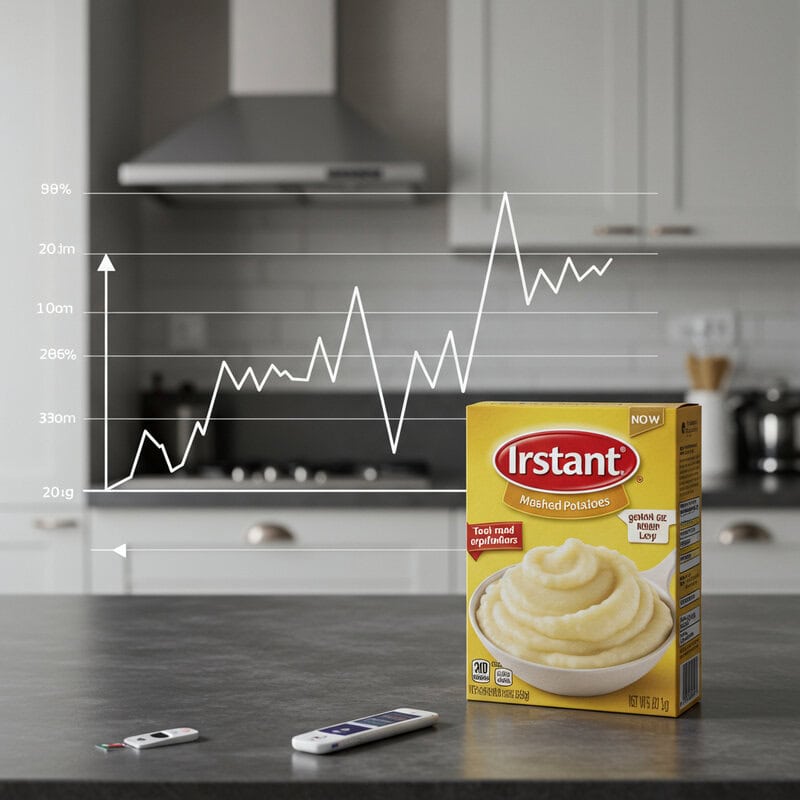
Instant mashed potatoes are a convenient side dish, but their refined starch content makes them a risky choice for diabetics. The dehydration and processing strip away most of the fiber and nutrients, turning the potatoes into a rapidly digestible starch. As a result, instant mashed potatoes have a high glycemic index and can cause a quick and pronounced spike in blood glucose. According to Healthline, instant mashed potatoes raise blood sugar even faster than boiled or baked whole potatoes due to their fine texture and lack of fiber.
In comparison, whole potatoes—especially when boiled with the skin on—retain more fiber and nutrients, resulting in a slower, more gradual rise in blood sugar. Still, portion control is important even with whole potatoes, as they are a starchy vegetable. Many people mistakenly believe instant mashed potatoes are equivalent to homemade, not realizing the dramatic difference in their effect on blood glucose.
For better blood sugar management, diabetics should opt for small portions of whole, unprocessed potatoes or consider alternatives like cauliflower mash or root vegetable blends. For more diabetes-friendly side dish ideas, visit the Diabetes Food Hub: Sides.
50. Restaurant Wraps
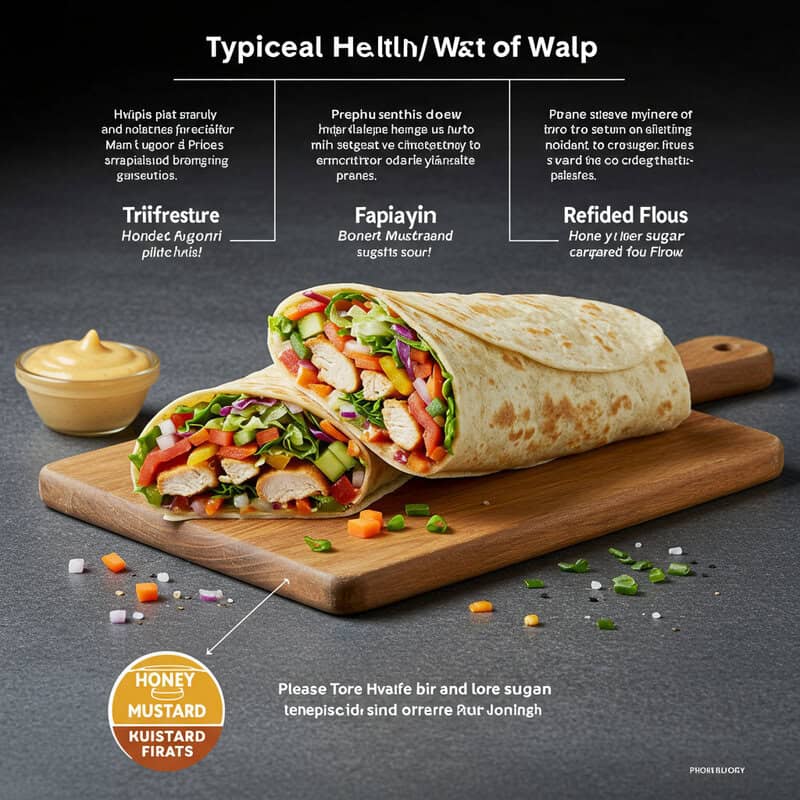
Restaurant wraps are often marketed as a lighter, healthier alternative to sandwiches, but they can be deceptively high in carbohydrates and sugars. Most commercial wraps are made with large tortillas containing refined white flour, which is digested quickly and causes rapid spikes in blood glucose. Additionally, many restaurant wraps include sweet sauces such as honey mustard, barbecue sauce, or sweetened mayonnaise, which further increases the sugar content. According to Healthline, a single restaurant wrap can have as many carbohydrates as three or four slices of bread, especially when oversized tortillas are used.
Homemade wraps offer much greater control over the type of tortilla and the ingredients inside. By using whole grain or low-carb tortillas, lean proteins, plenty of non-starchy vegetables, and unsweetened sauces or dressings, you can create a more balanced and diabetes-friendly meal. Many people mistakenly believe that choosing a wrap automatically makes their meal healthier, not realizing the high glycemic impact of the flour and sauces used in restaurants.
When dining out, diabetics should consider asking for whole wheat or low-carb tortillas, request sauces on the side, and focus on filling the wrap with lean protein and vegetables. For more healthy wrap ideas, visit the Diabetes Food Hub: Sandwiches & Wraps.
Conclusion

Even foods that appear healthy can be surprisingly harmful for those managing diabetes. Vigilance is crucial: carefully reading nutrition labels, monitoring portion sizes, and being aware of hidden sugars and refined starches can make a significant difference in blood glucose control. Regular self-monitoring and awareness of how specific foods affect your individual blood sugar is essential. When in doubt, consult with healthcare professionals or a registered dietitian to develop a personalized dietary plan. For more tips and support, visit the American Diabetes Association: Eating Well. Making informed choices empowers people with diabetes to enjoy a healthier, more balanced life.
Disclaimer
The information provided in this article is for general informational purposes only. While we strive to keep the information up-to-date and correct, we make no representations or warranties of any kind, express or implied, about the completeness, accuracy, reliability, suitability, or availability with respect to the article or the information, products, services, or related graphics contained in the article for any purpose. Any reliance you place on such information is therefore strictly at your own risk.
In no event will we be liable for any loss or damage including without limitation, indirect or consequential loss or damage, or any loss or damage whatsoever arising from loss of data or profits arising out of, or in connection with, the use of this article.
Through this article you are able to link to other websites which are not under our control. We have no control over the nature, content, and availability of those sites. The inclusion of any links does not necessarily imply a recommendation or endorse the views expressed within them.
Every effort is made to keep the article up and running smoothly. However, we take no responsibility for, and will not be liable for, the article being temporarily unavailable due to technical issues beyond our control.




